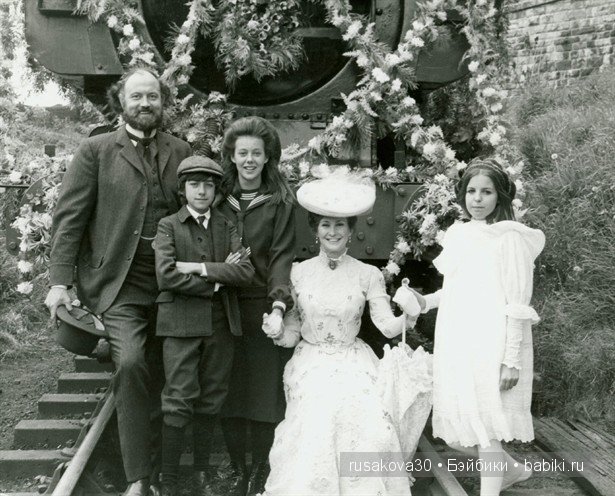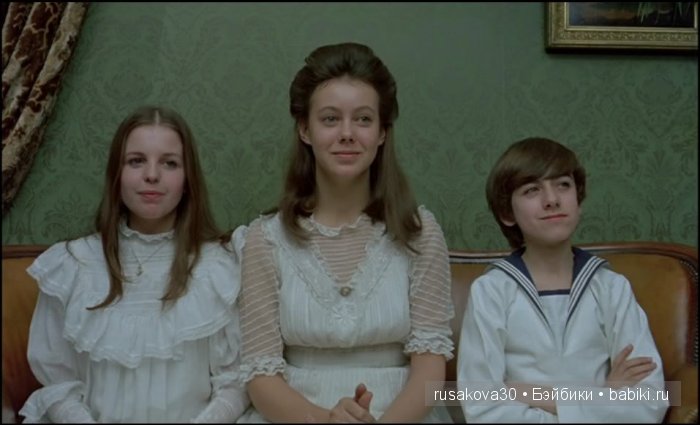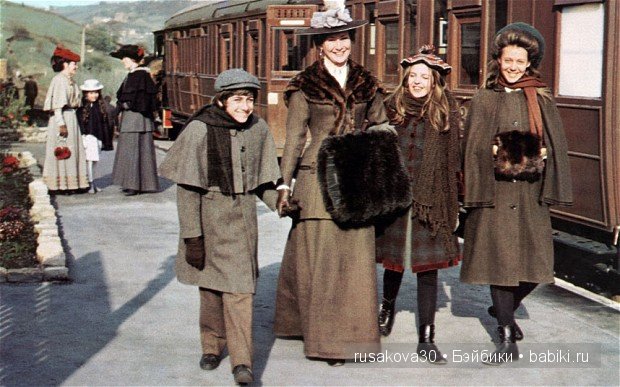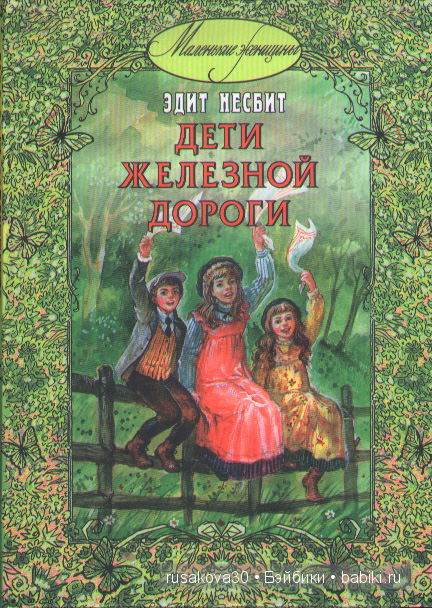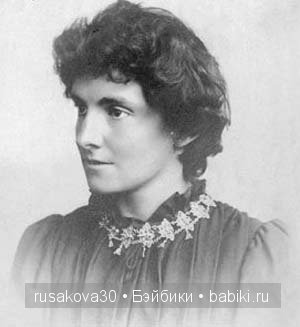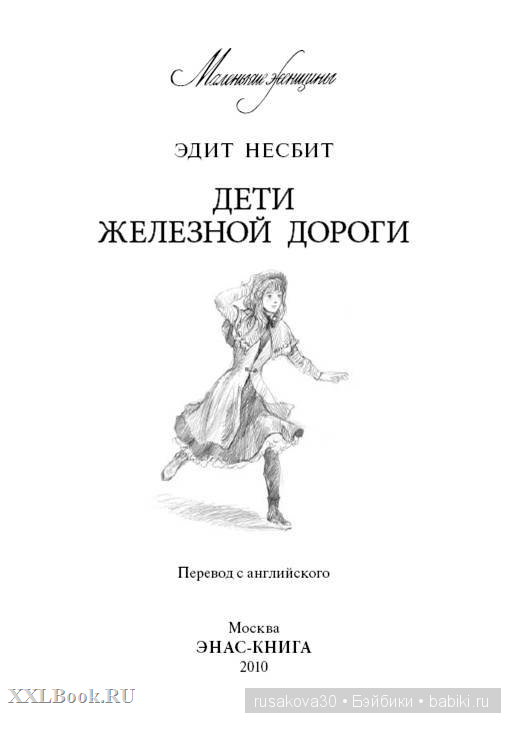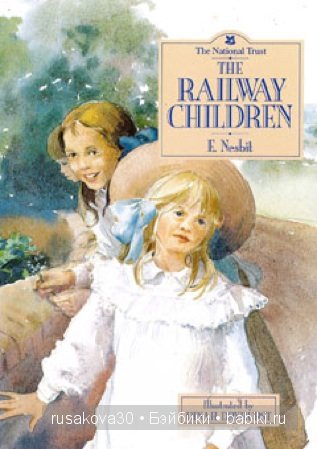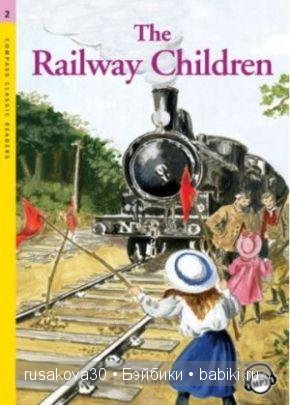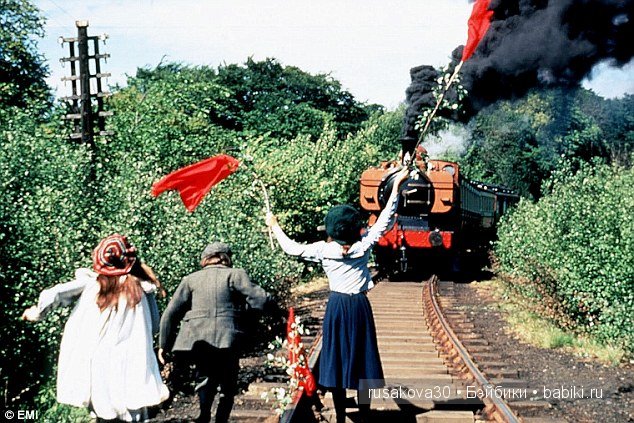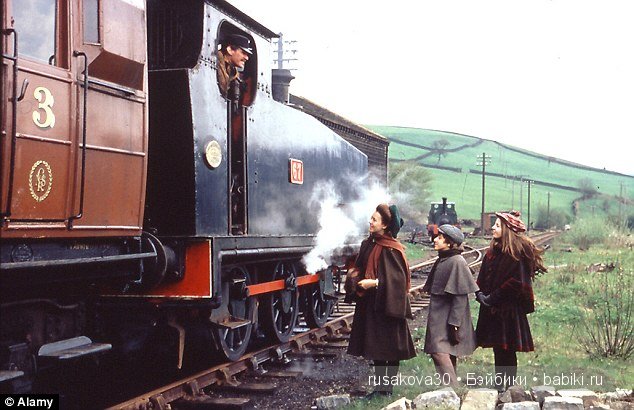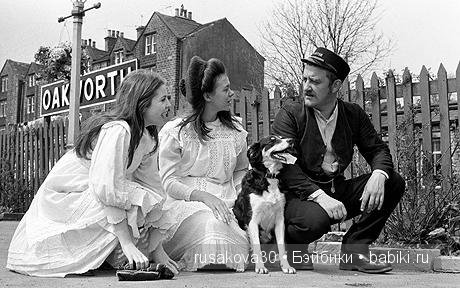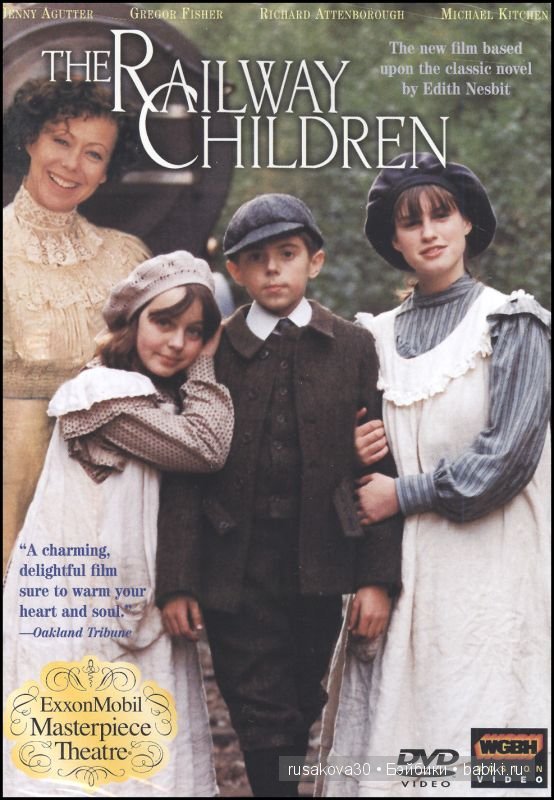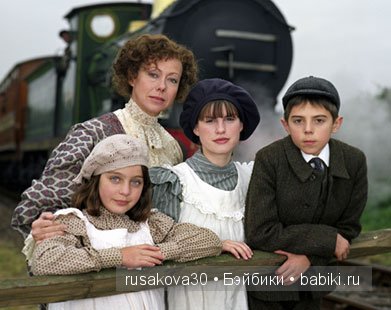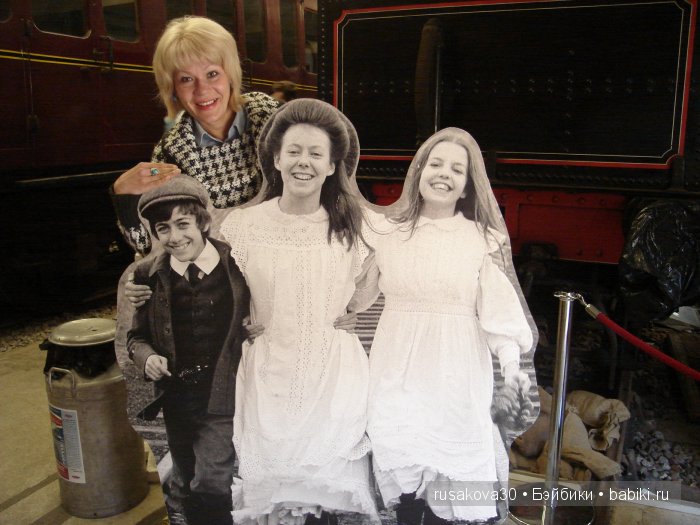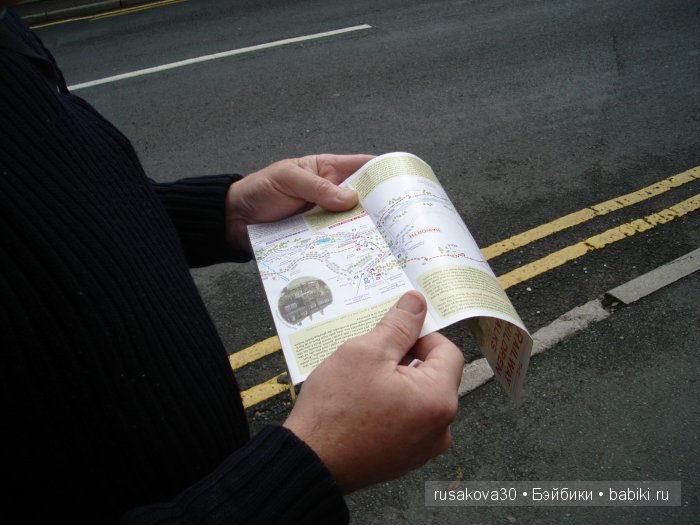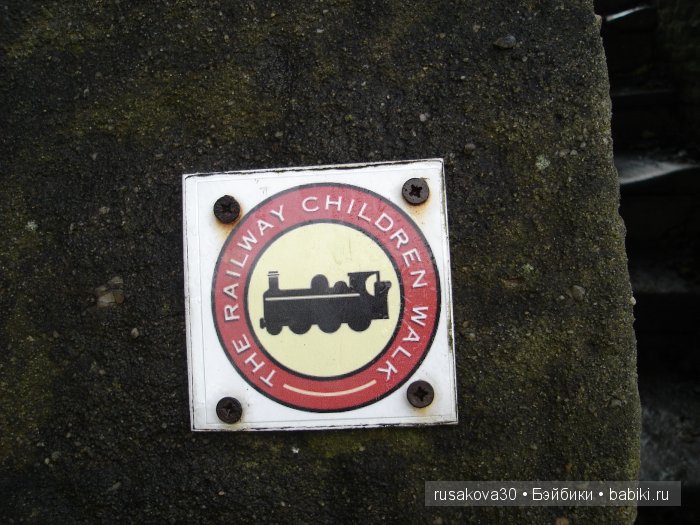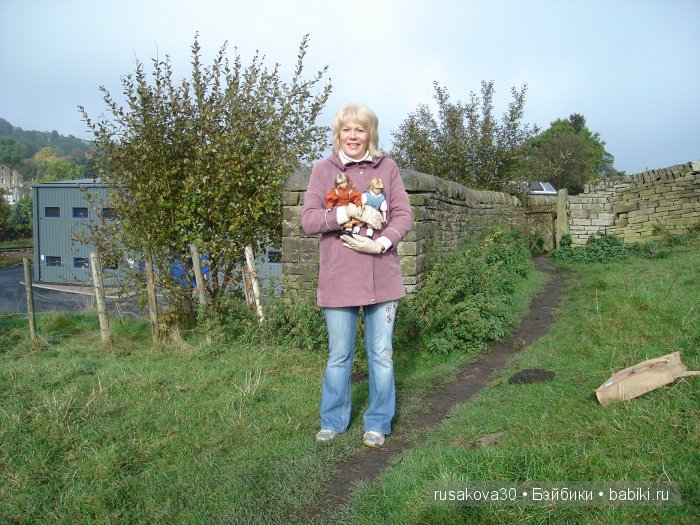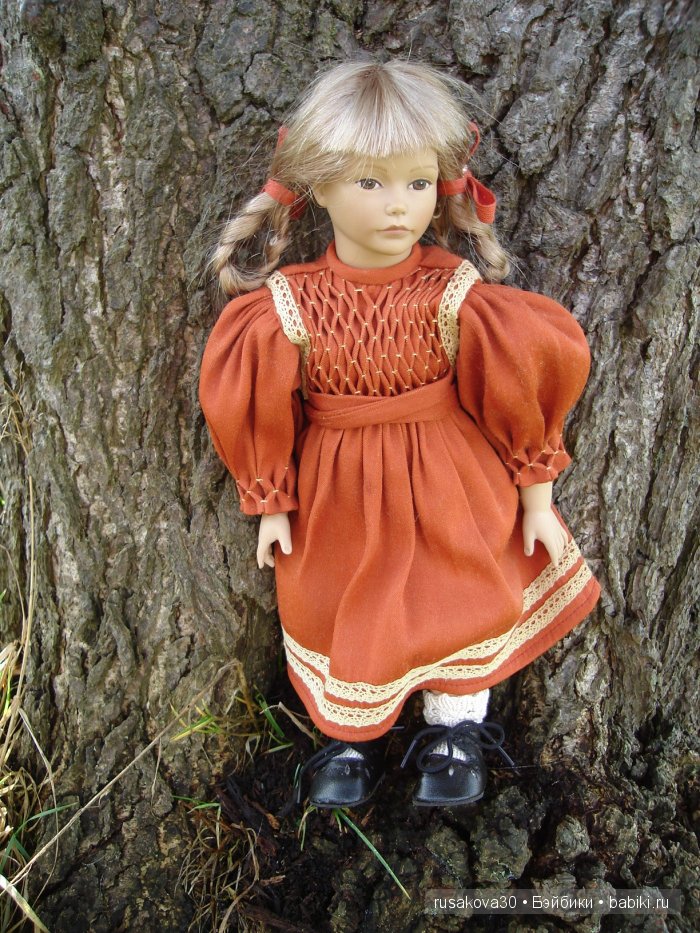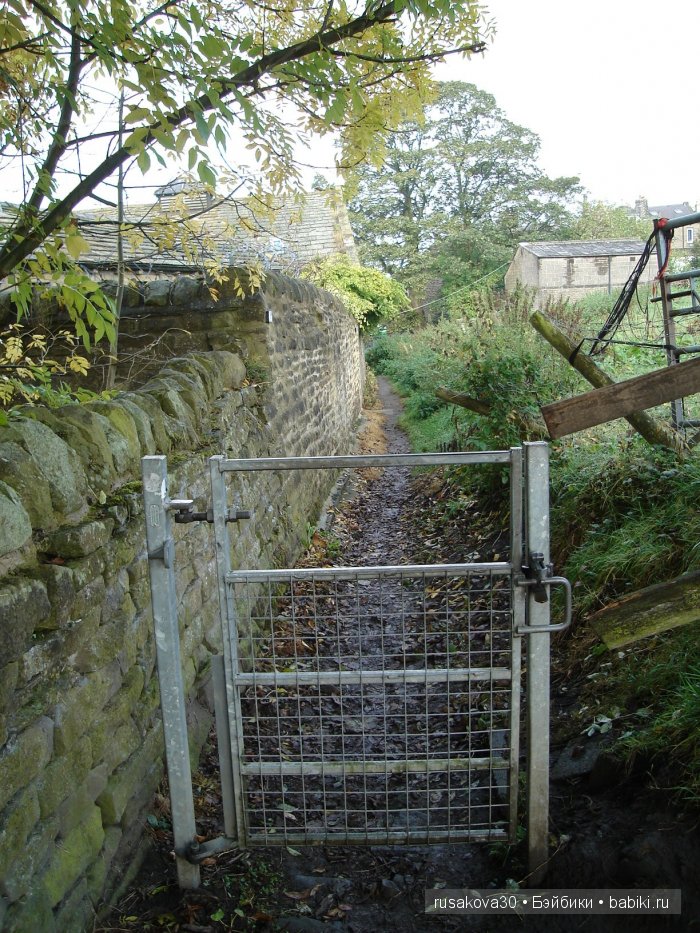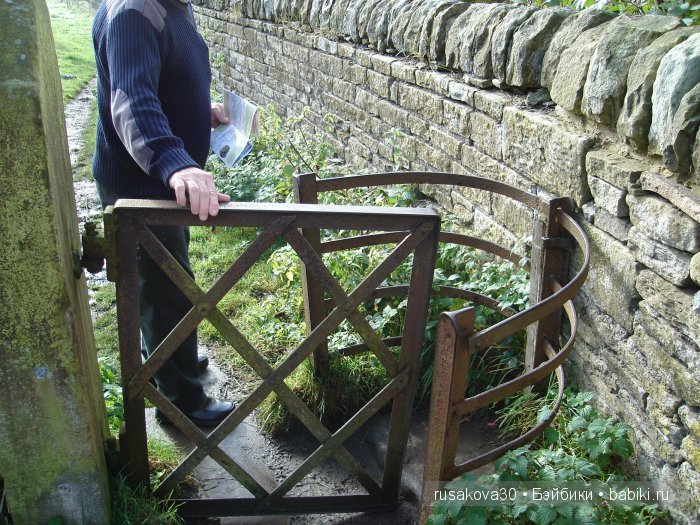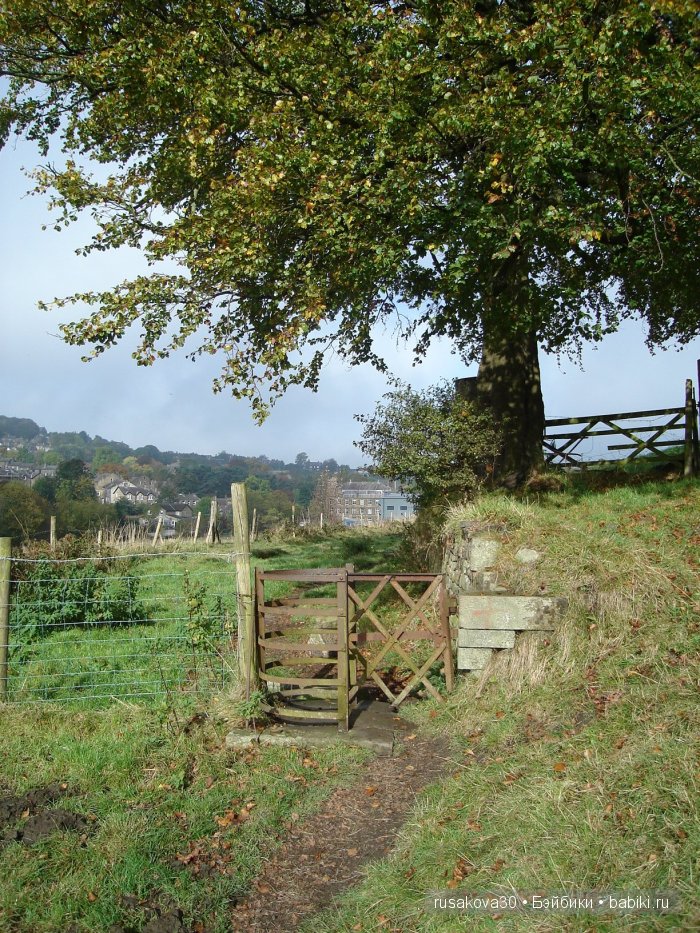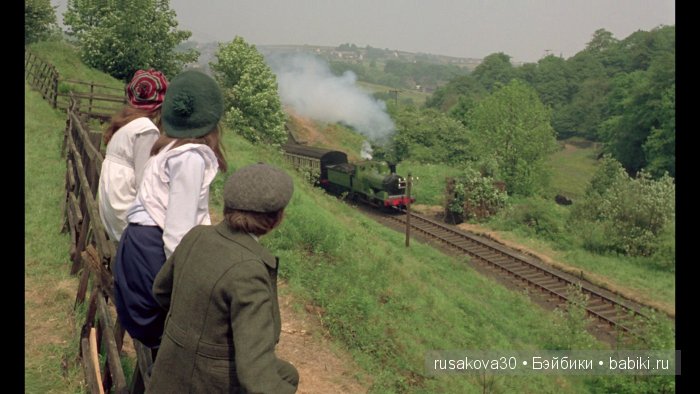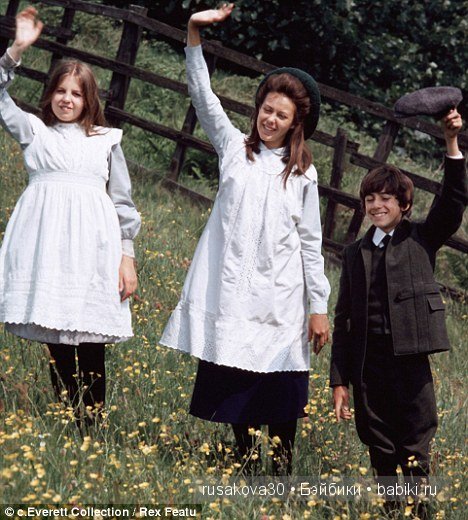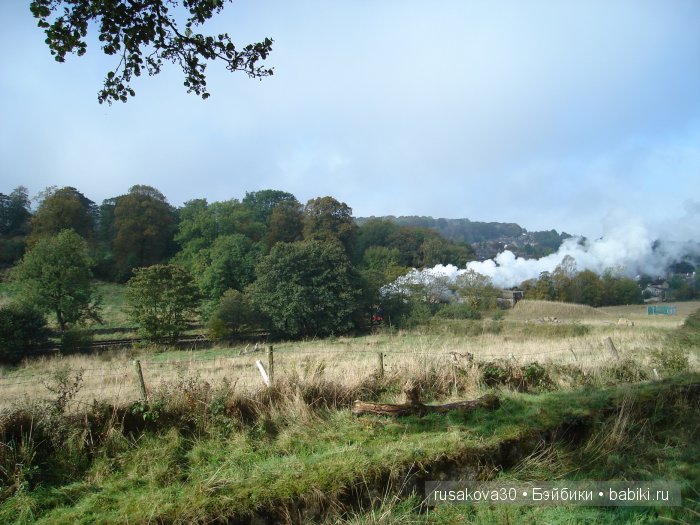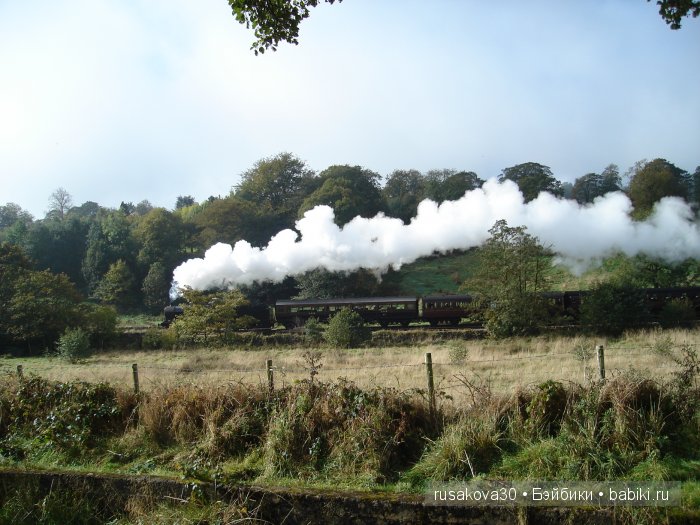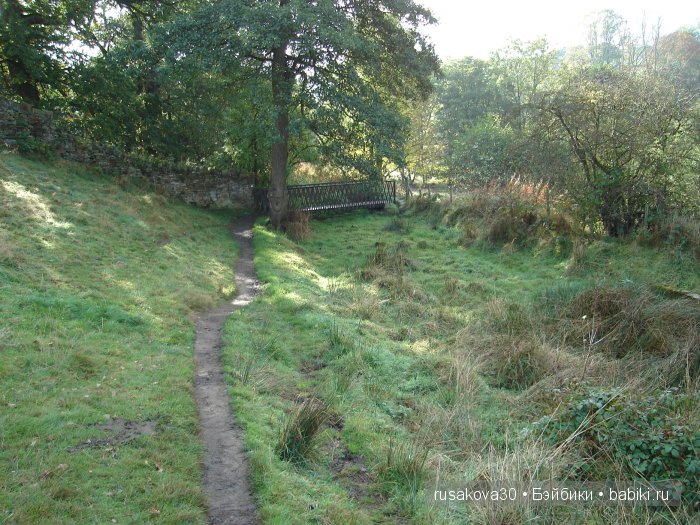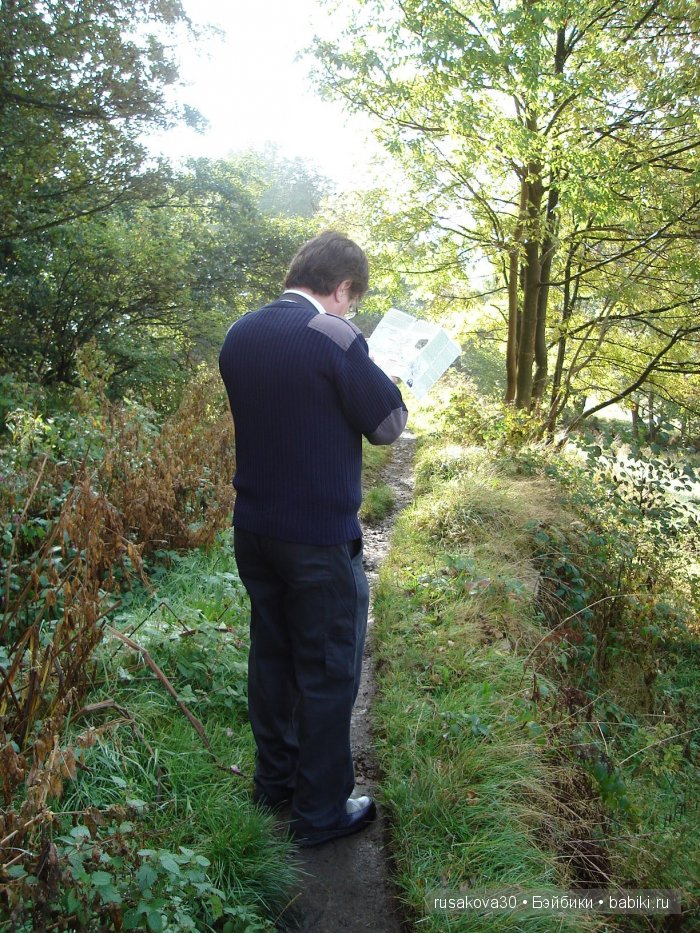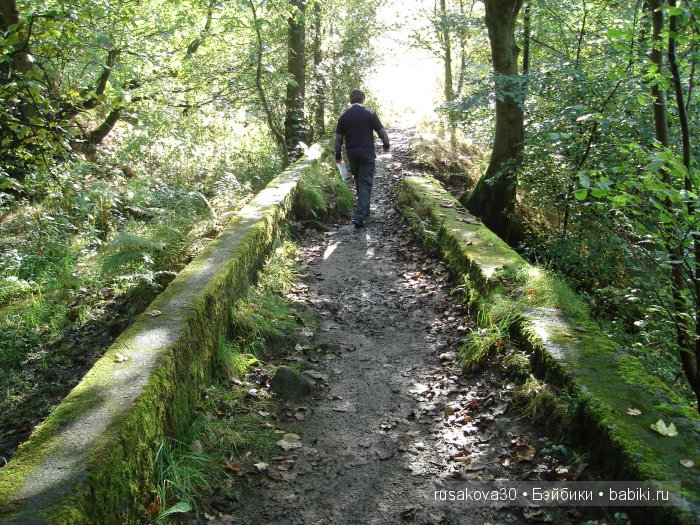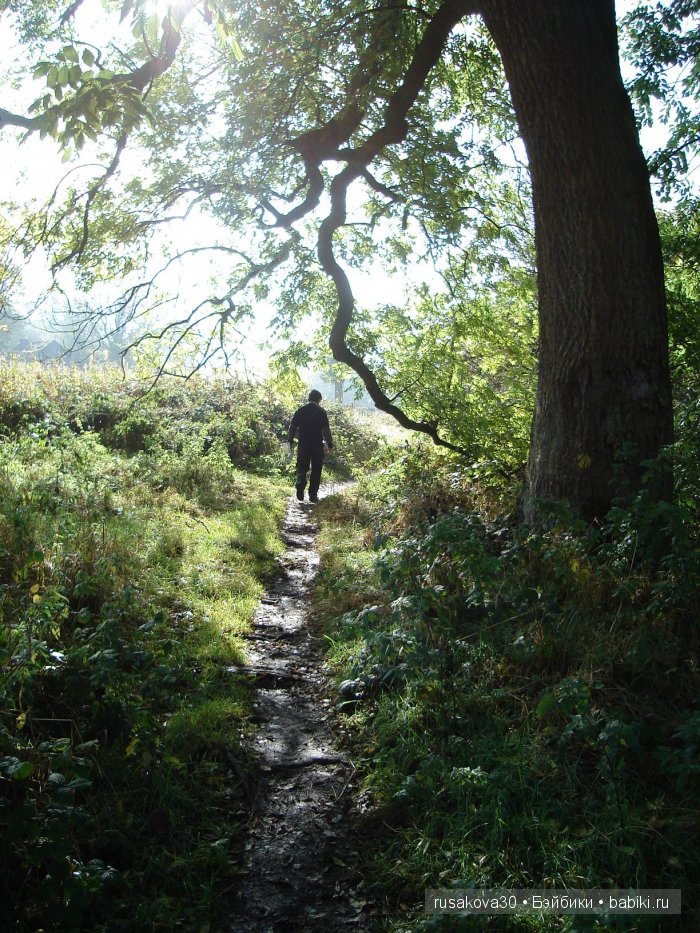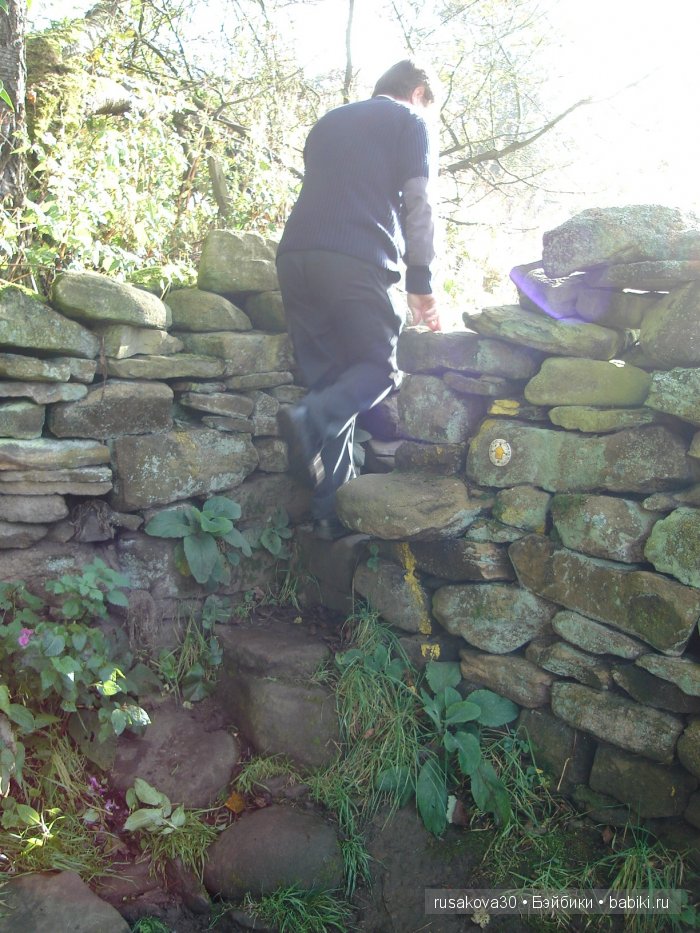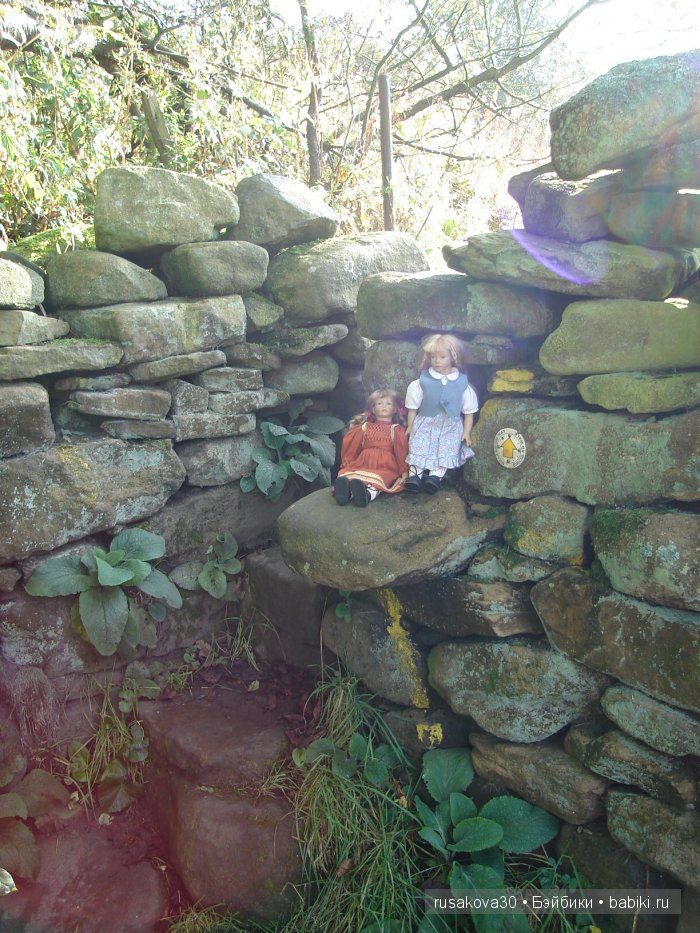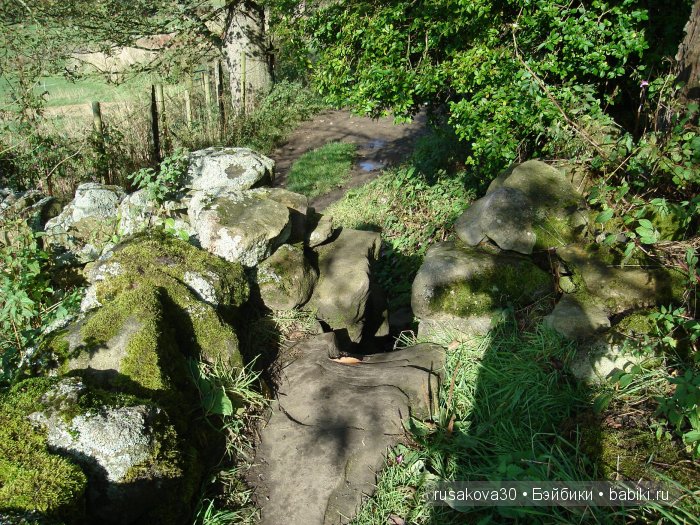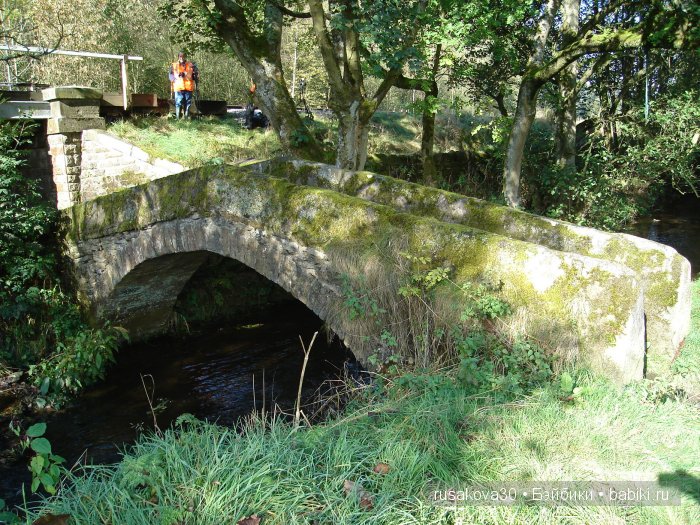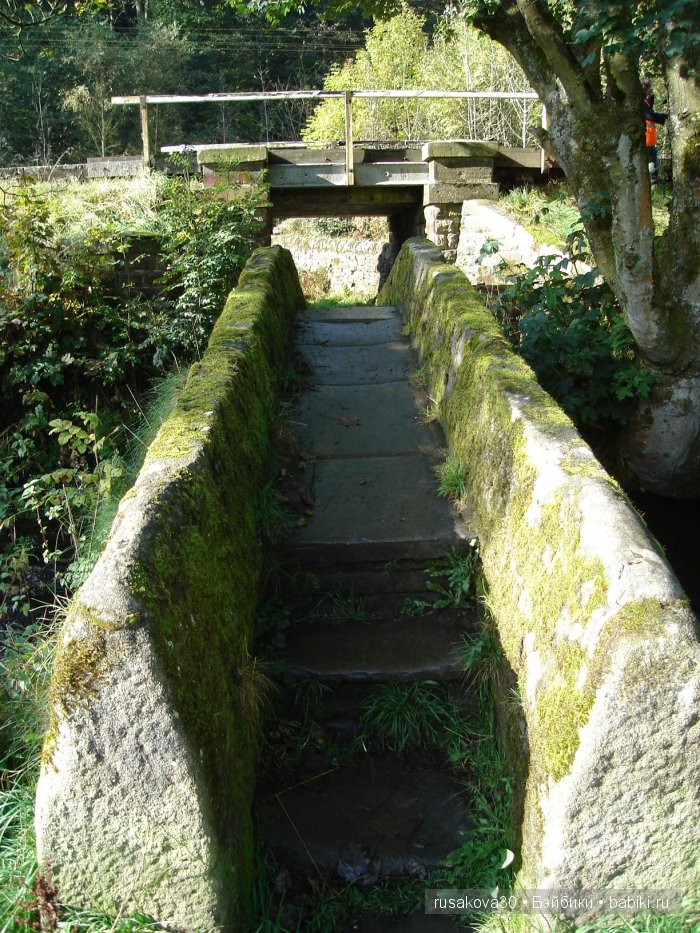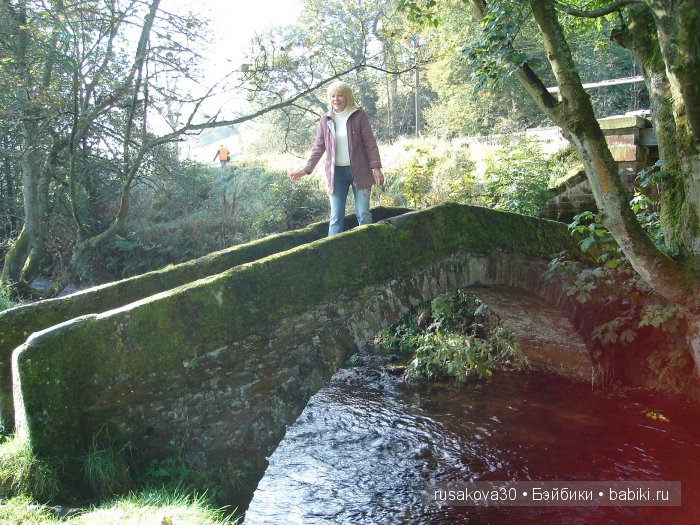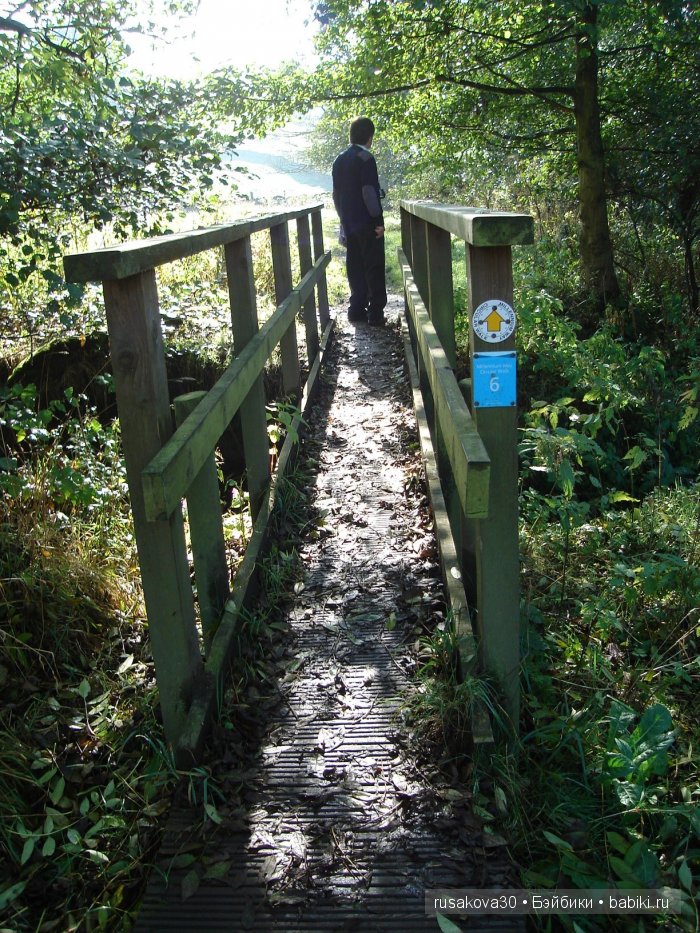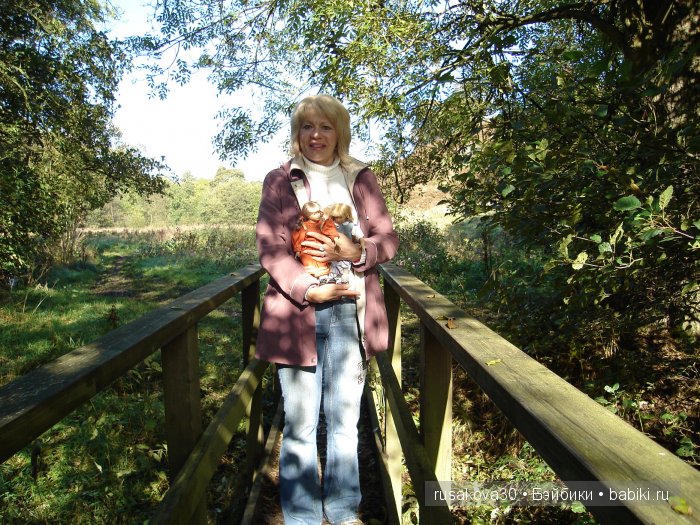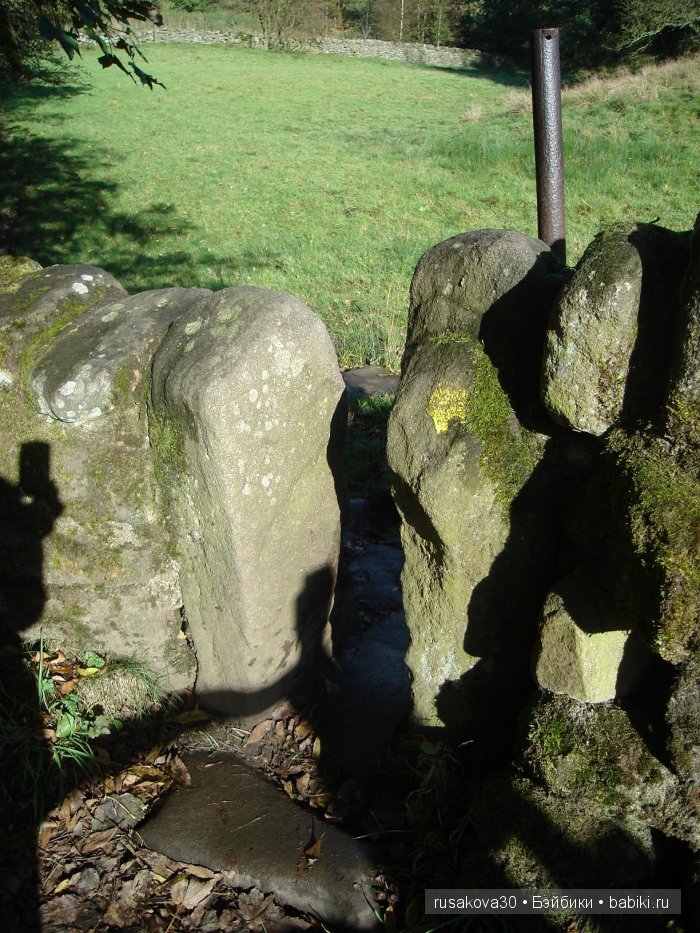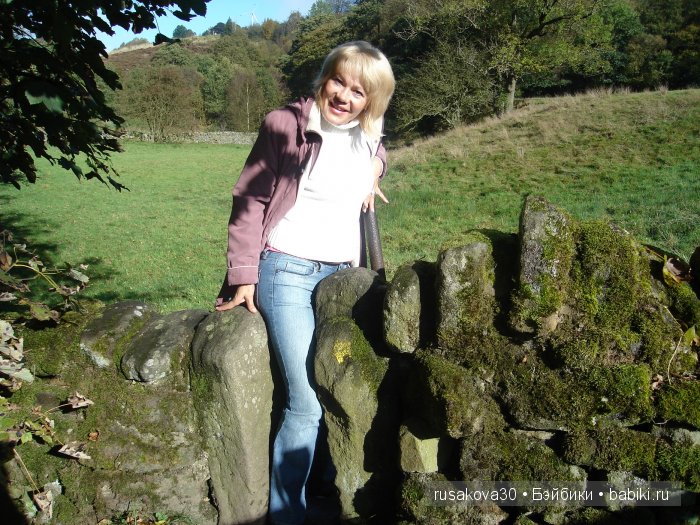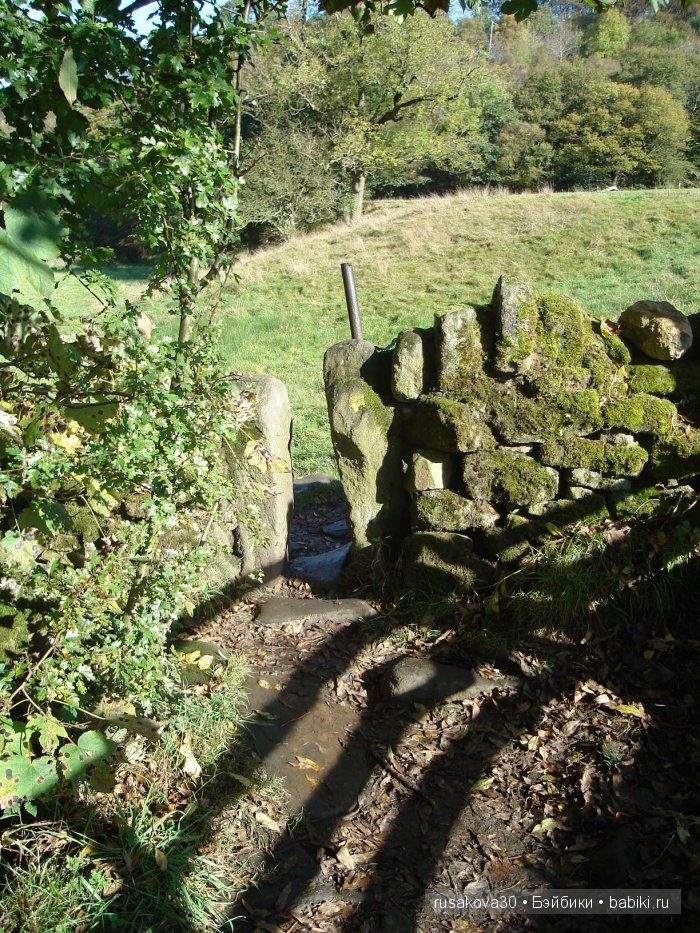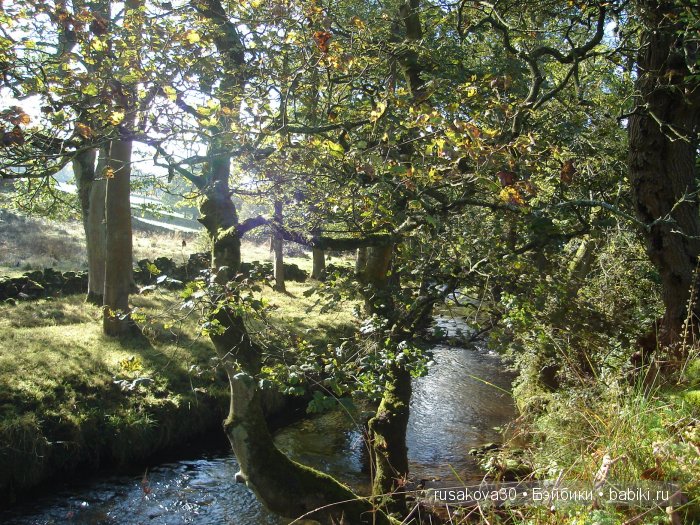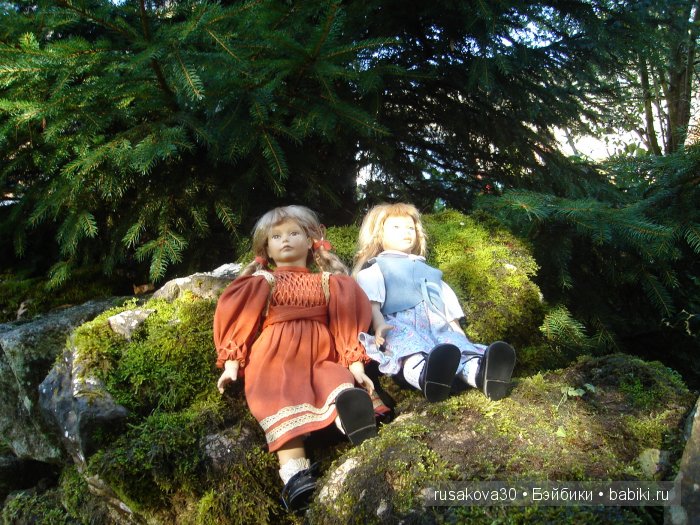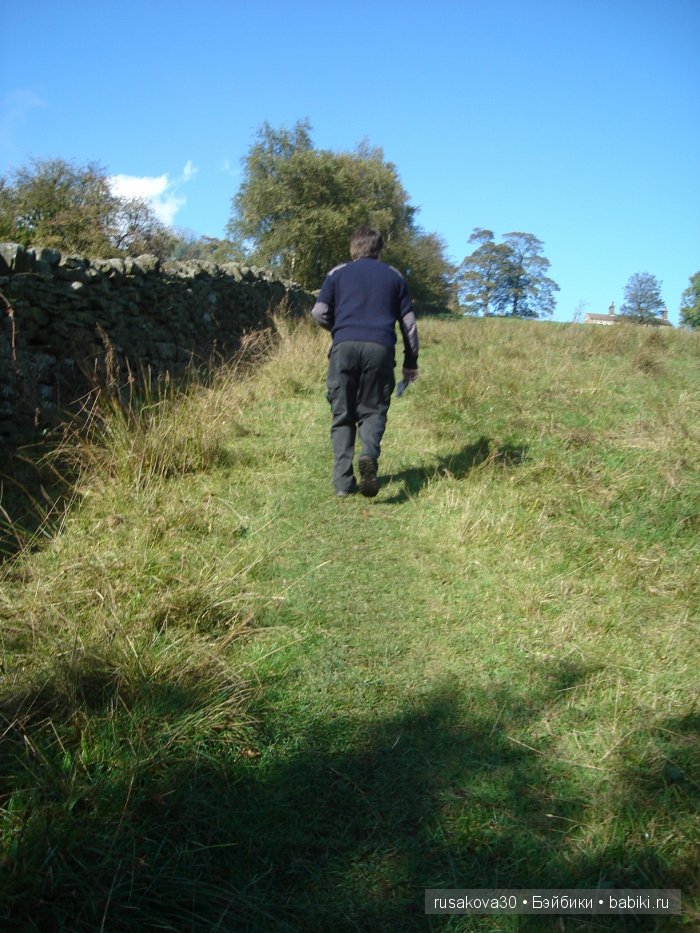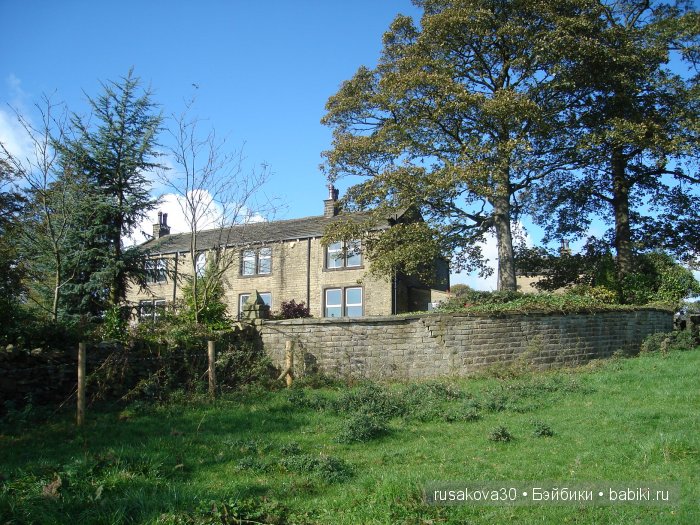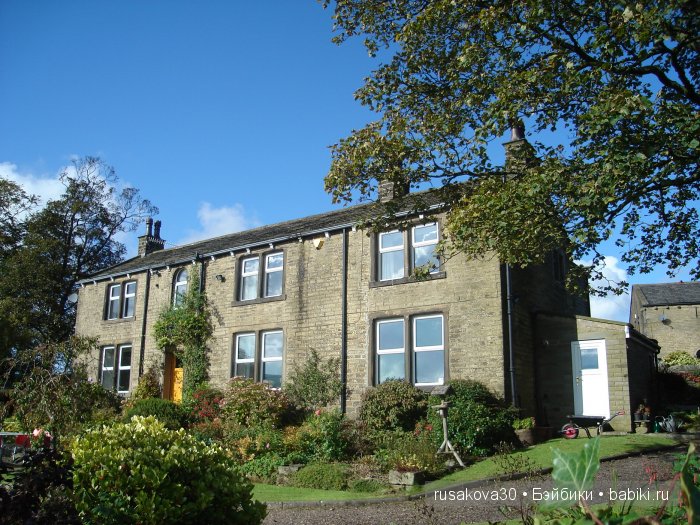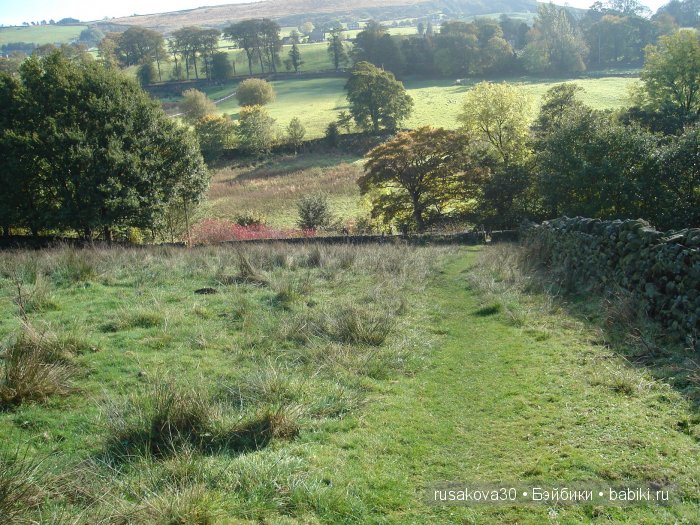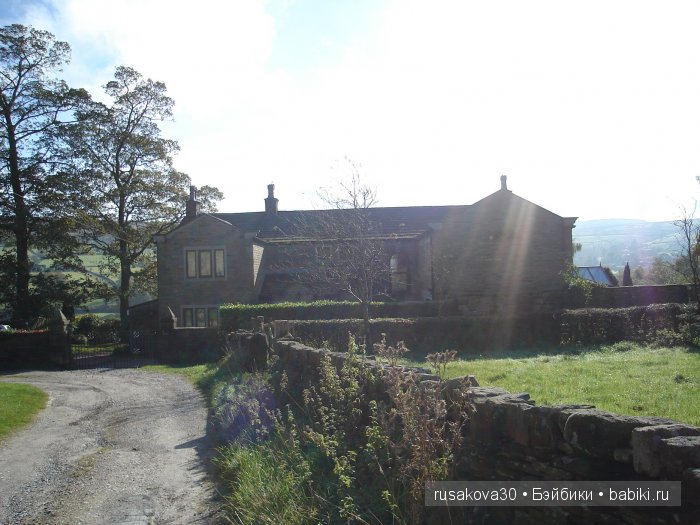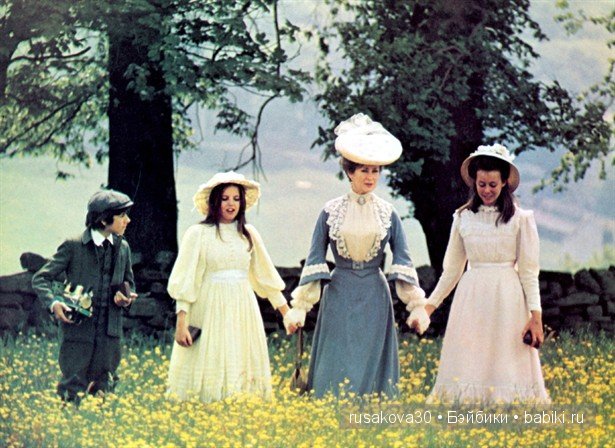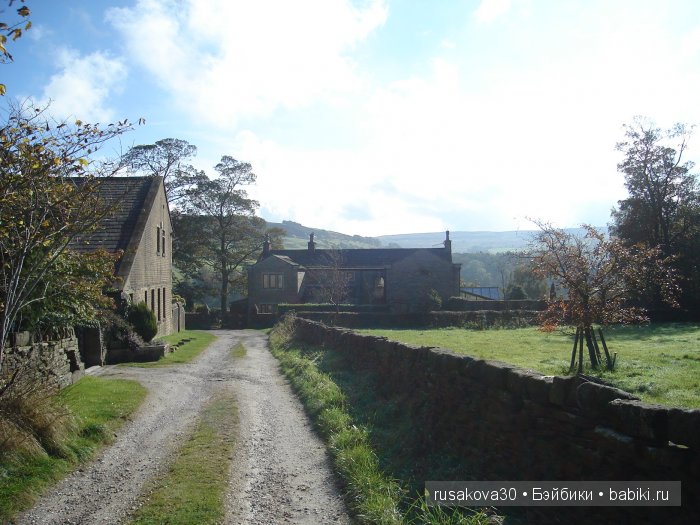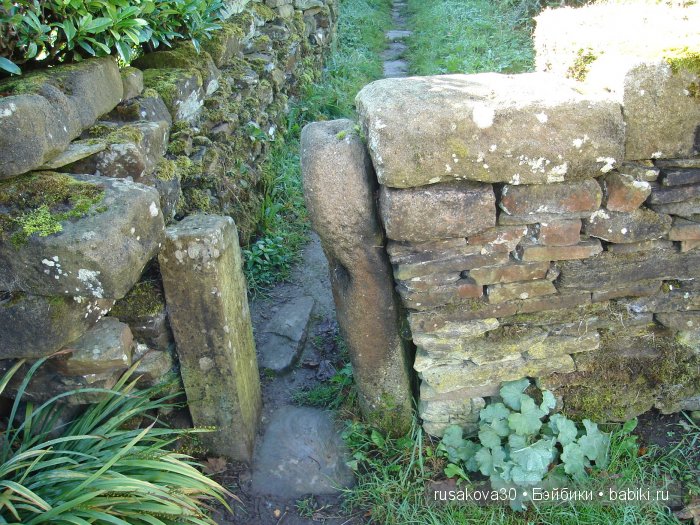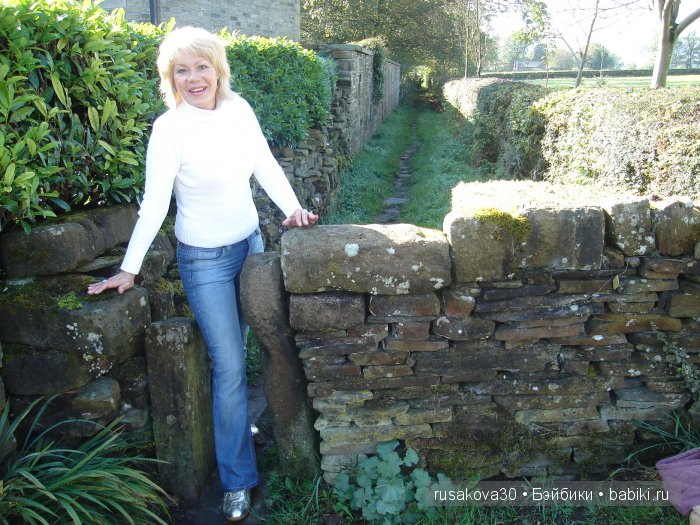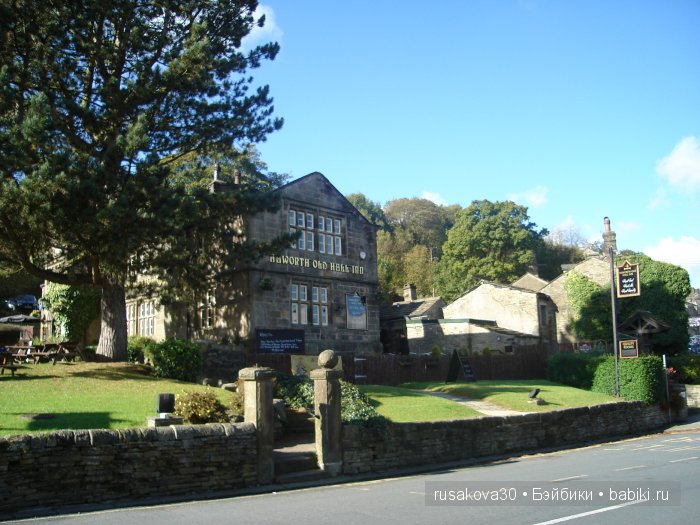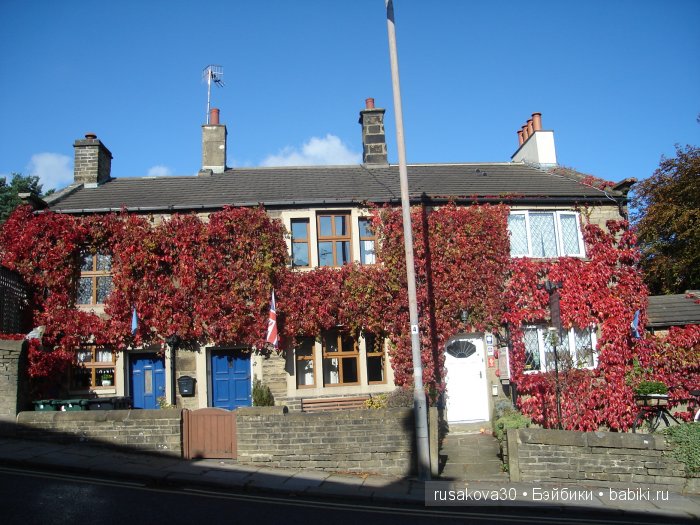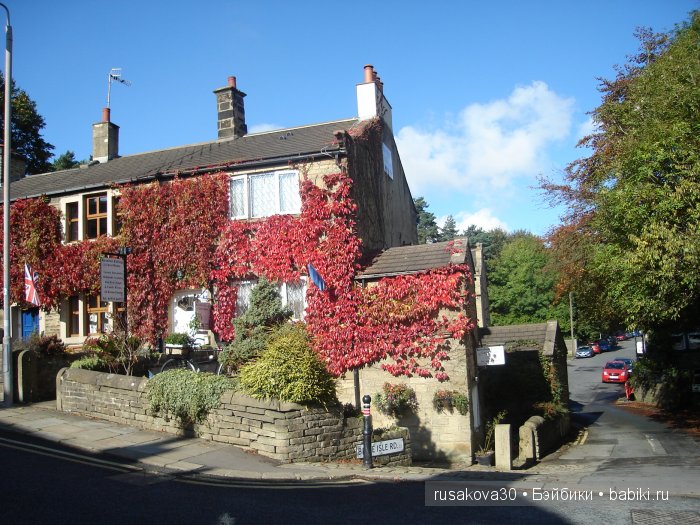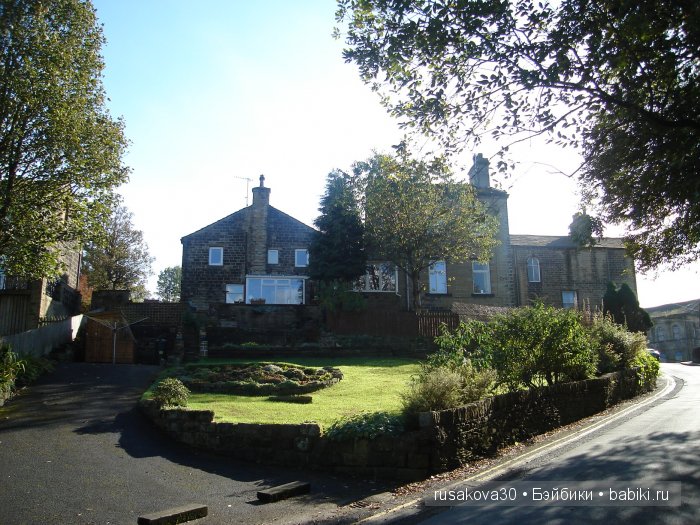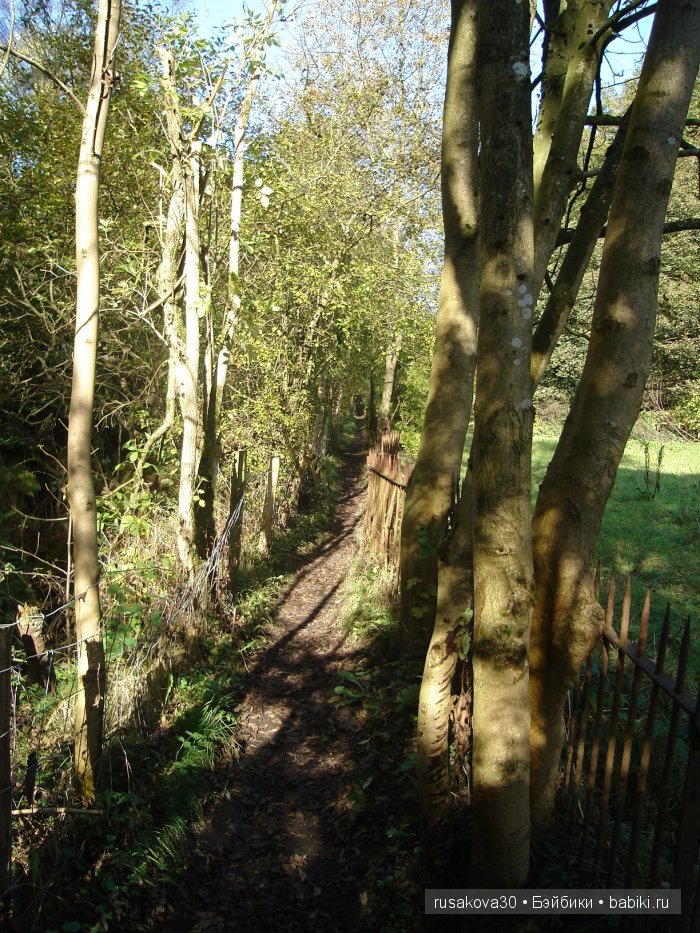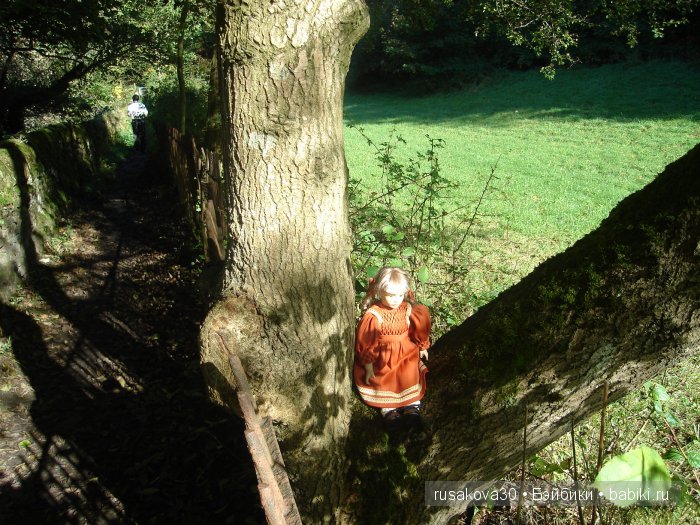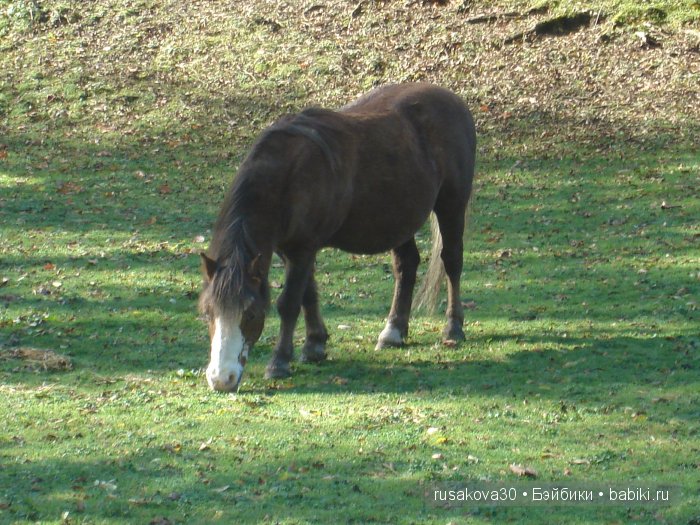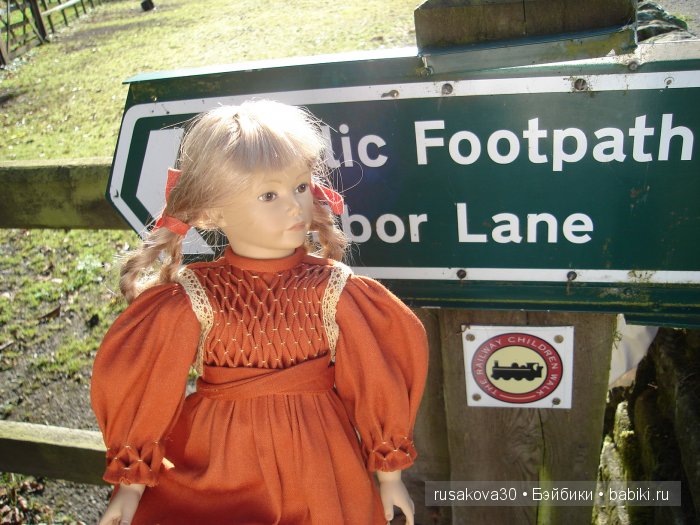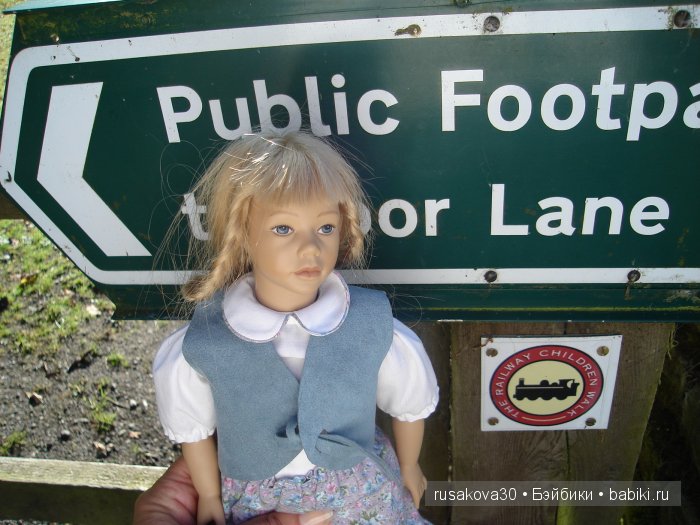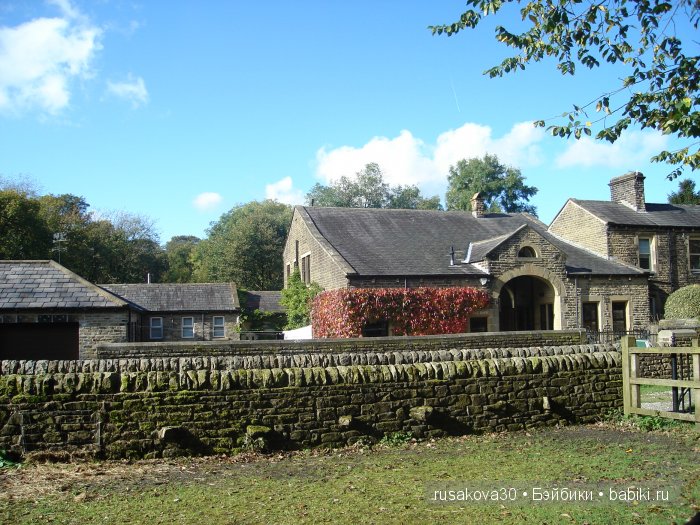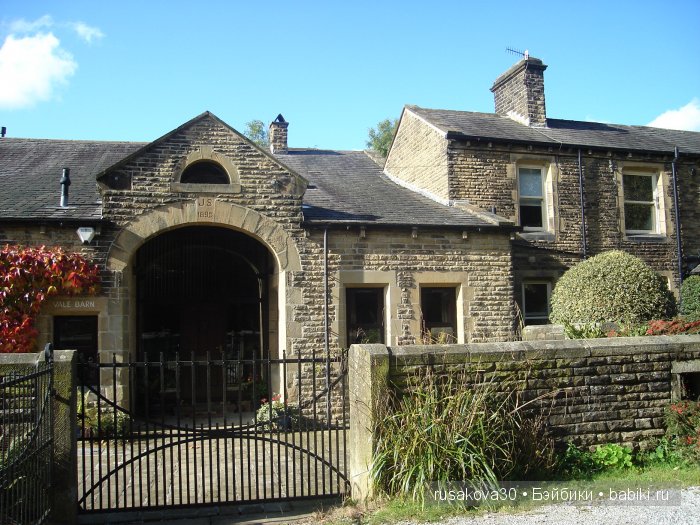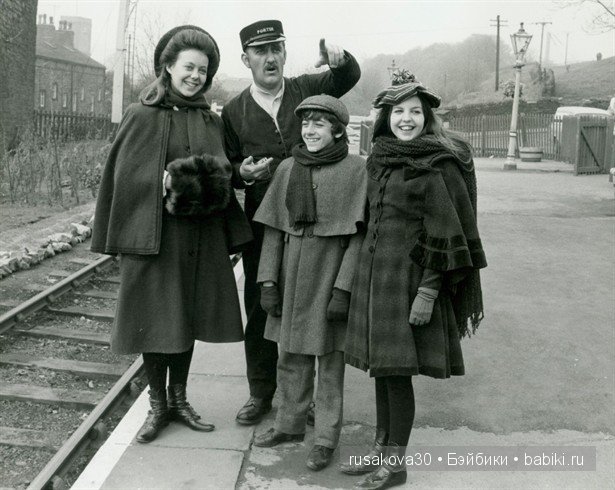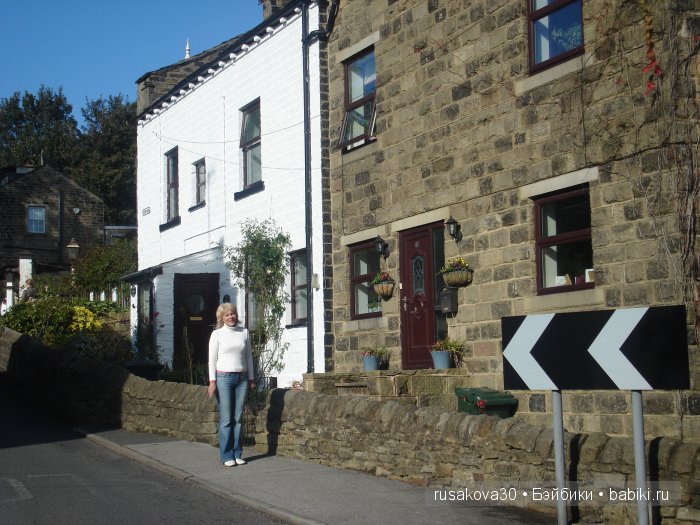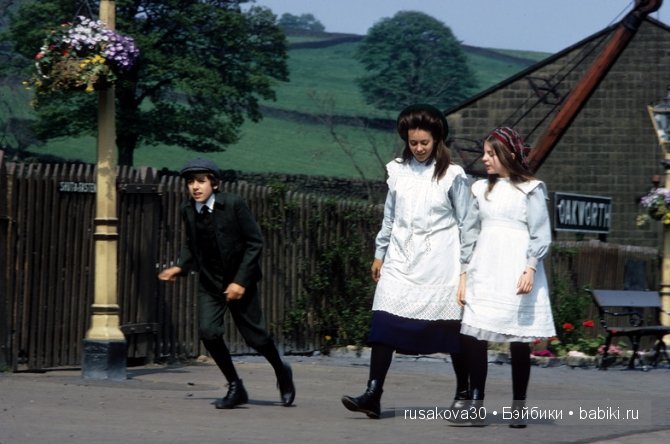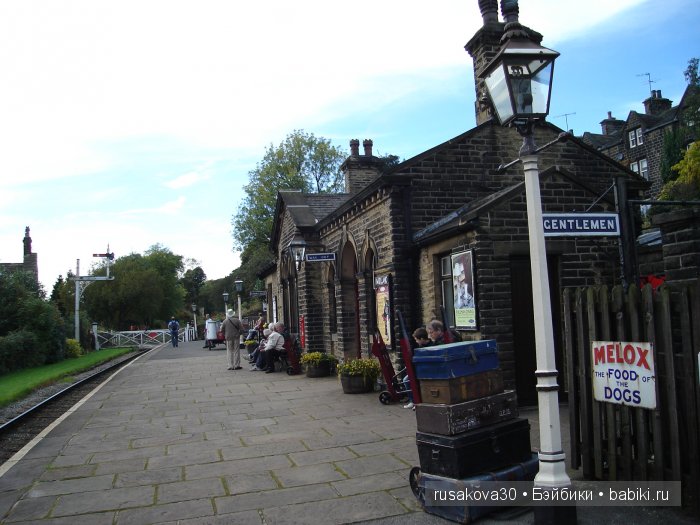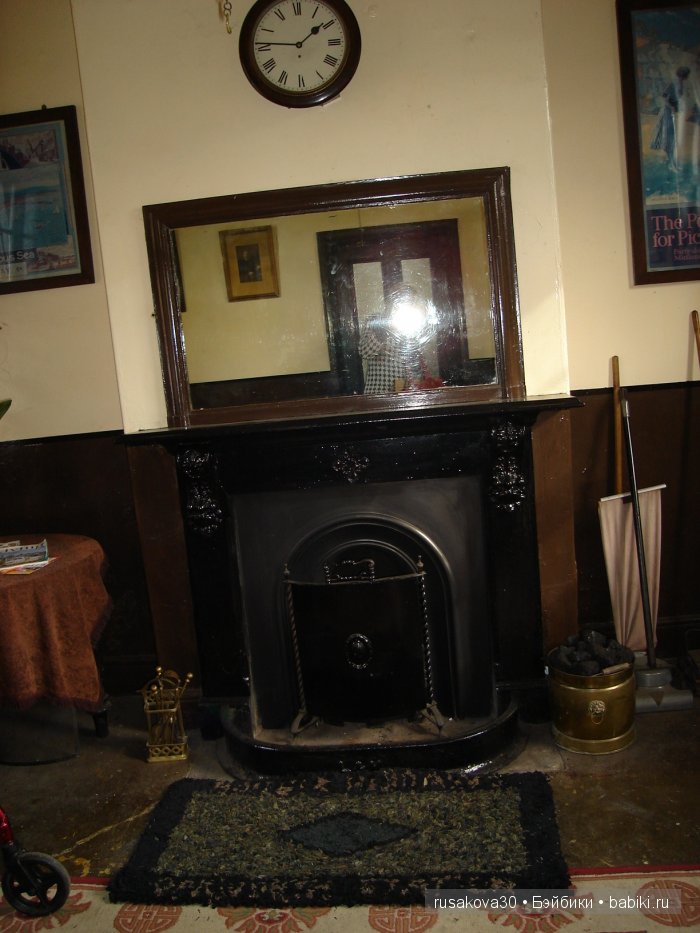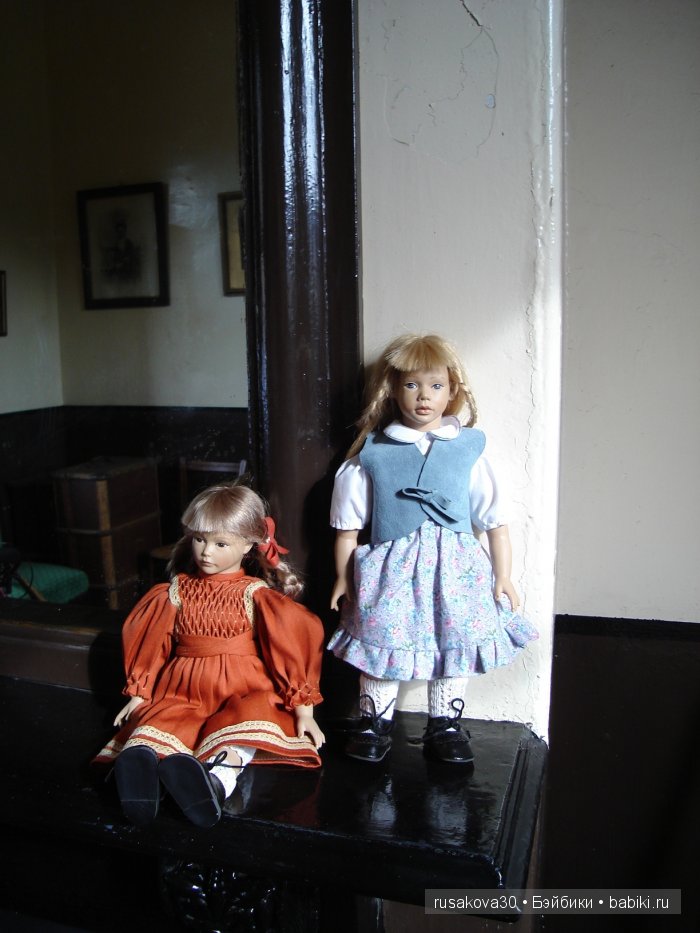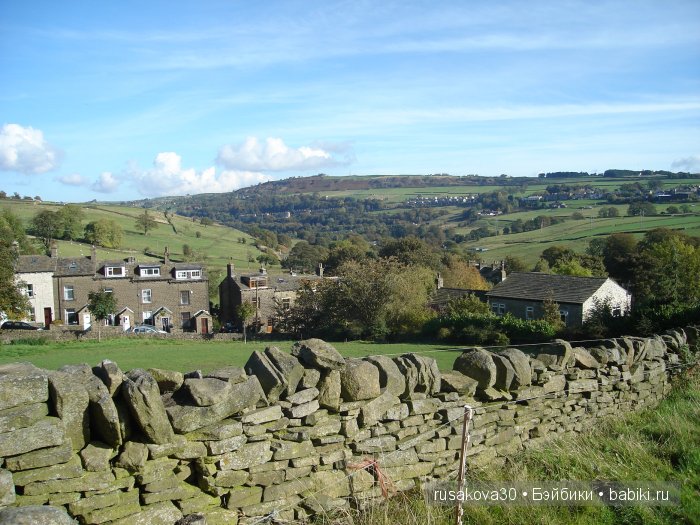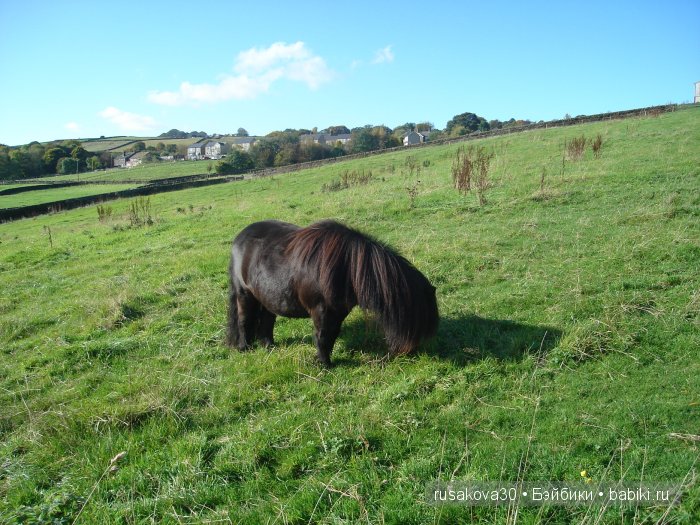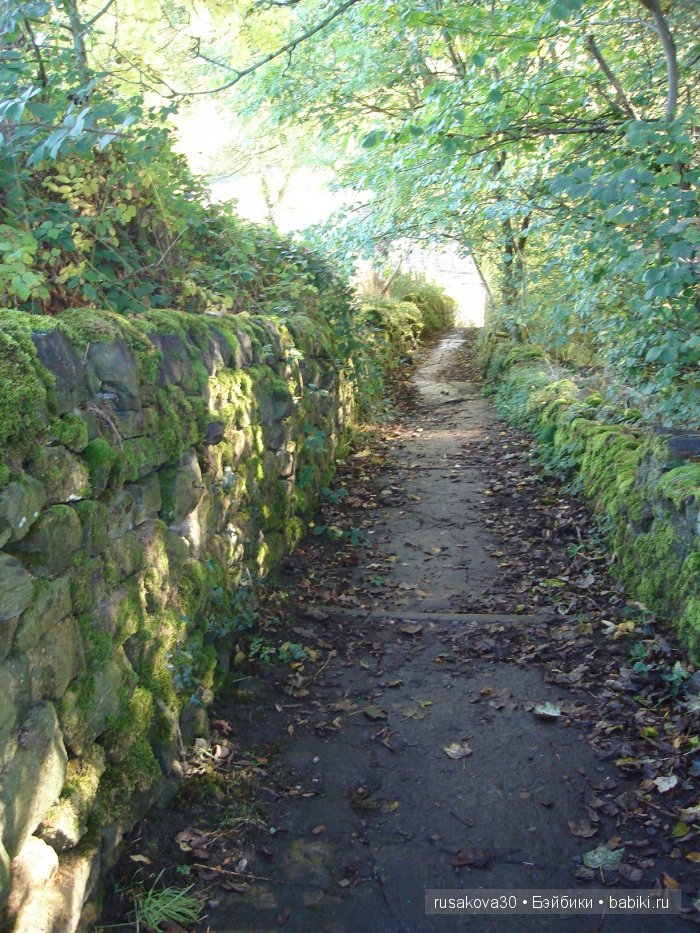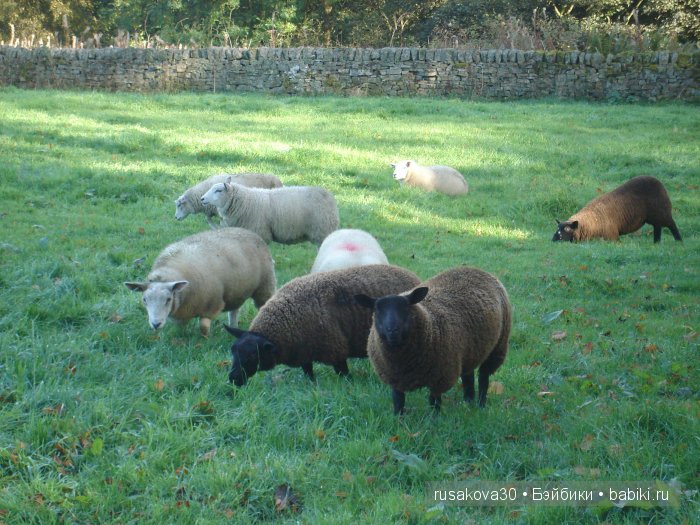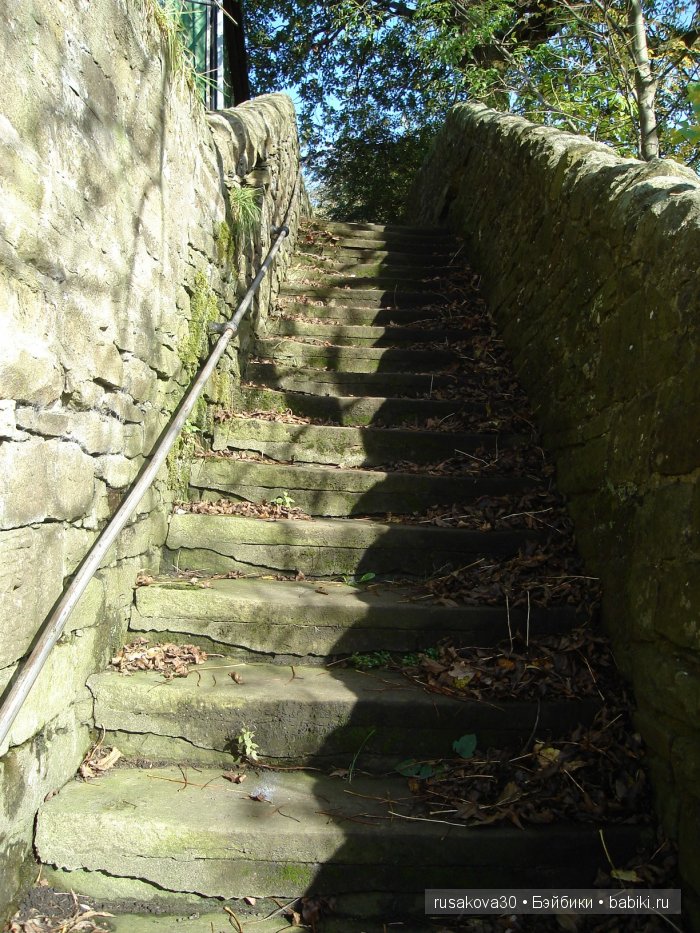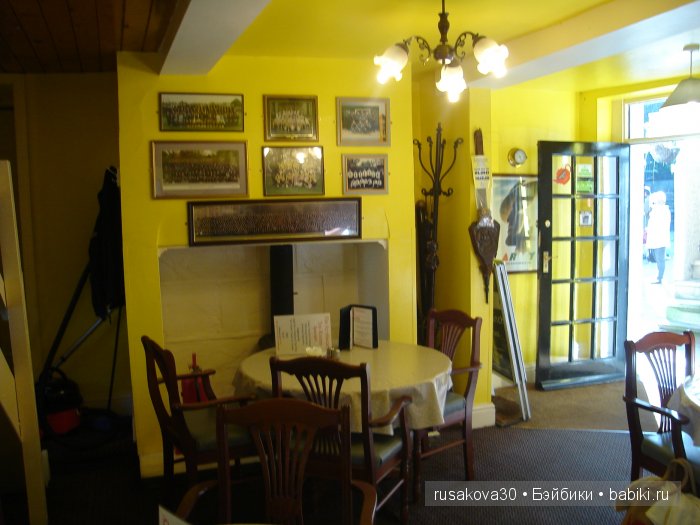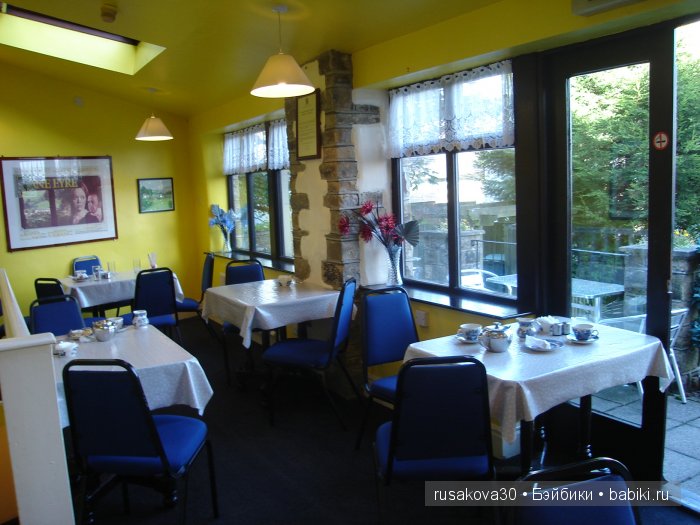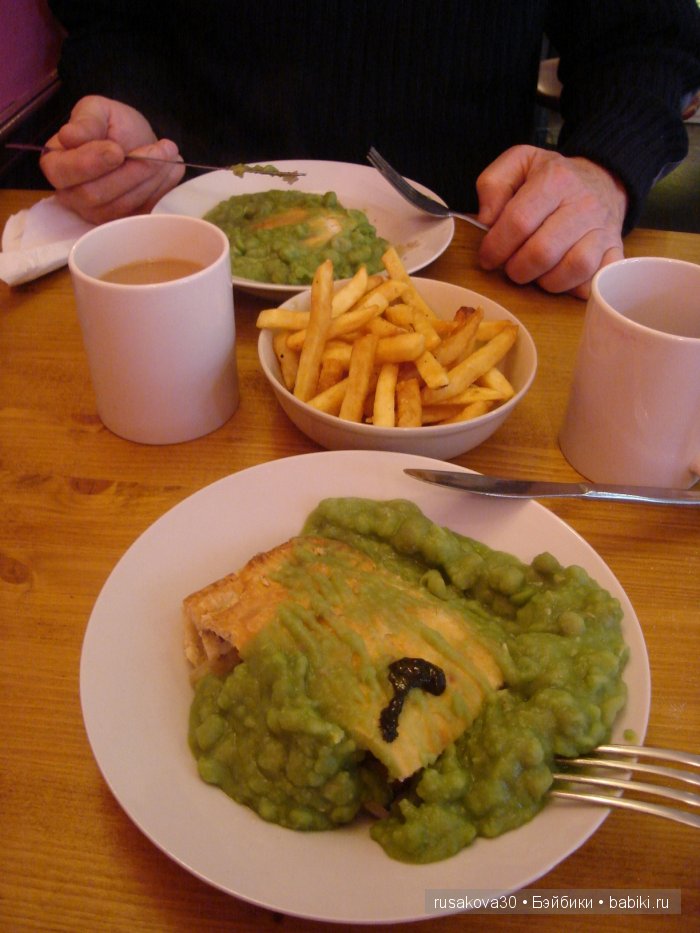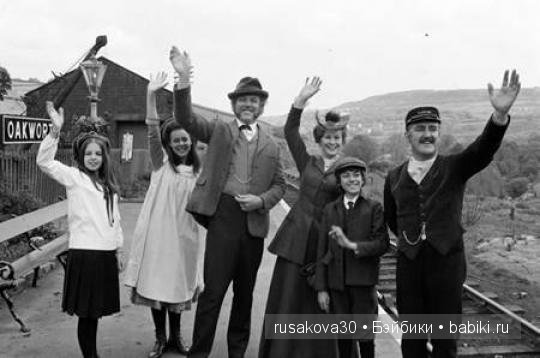- Краткие содержания
- Разные авторы
- Дети железной дороги
Краткое содержание Дети железной дороги Несбита
В Лондоне живет семья: родители и трое детей. У них красивый дом и прислуга, выполняющая всю работу. Но однажды главу семейства арестовывают из-за ложного обвинения. Мать решает не рассказывать детям правду, она говорит, что отец просто уехал надолго.
Денег у семьи теперь нет. Единственный заработок – это книги, которые пишет мать. Семья вынуждена перебраться из столицы в деревню, где селится в очень скромном домике. Прислуги у них нет, дети помогают матери с работой по дому. Им приходится научиться многому: готовить еду, убирать, стирать и топить печь.
Единственным развлечением для троих ребятишек теперь является железная дорога, которая проходит возле деревни. Они надеются, что когда-нибудь с ее помощью к ним вернется отец. А пока дети знакомятся с местными жителями, заводят друзей и всем помогают.
В их жизни не все гладко. Порой они ссорятся между собой, порой – с другими детьми. Они привыкли жить в достатке в городе, где полно развлечений. А теперь их жизнь кардинально изменилась. Им приходится приспосабливаться к новым условиям, но детям удается сохранить доброту, несмотря на обстоятельства и стремительное взросление.
Произведение учит тому, что нельзя отчаиваться ни при каких обстоятельствах и злиться на мир. Всегда нужно творить добро и помогать людям.
Можете использовать этот текст для читательского дневника
Дети железной дороги. Картинка к рассказу
Сейчас читают
- Краткое содержание Железников Троп
В книге рассказывается про собаку по кличке Троп и мальчике. Троп жил в доме у одной старушки. В солнечный день старушка вышла крыльцо со своим маленьким внуком. Бабушка держала его на руках, поскольку он был еще маленьким
- Краткое содержание Платон Государство
Произведение Государство Платона — это беседа Платона касающаяся трудности идеального представления земли. Был написан в 360 году до нашей эры
- Краткое содержание Меховой интернат Успенского
Однажды ученица четвертого класса Люся у себя на даче встречает барсука, который умеет разговаривать, да и сам очень похож на человека. Зверек рассказывает ей, что он является директором
- Пруст
Марсель Пруст – французский романист XX века. Непризнанный гений. Его произведения адресованы литературным гурманам. Пруст читается медленно. К нему хочется возвращаться для медленных философских бесед.
- Краткое содержание Гоголь Записки сумасшедшего
«Записки сумасшедшего» Николая Гоголя написаны о типичном «маленьком человеке», каким был главный герой произведения, Аксентий Иванович Поприщин.
Краткое содержание Несбит Дети железной дороги для читательского дневника
Дети Роберта, Питер, Филлис и их мать, после того, как по ложному обвинению полицейские забирают отца семейства, вынуждены из большого лондонского дома с прислугой переехать в деревенский дом. Детям мать говорит, что папа просто уехал. На новом месте ребята проводят свободное время рядом с железной дорогой. Там они знакомятся с разными людьми.
В старом домишке, дети учатся самостоятельно топить печь, стирать, готовить еду и убираться. Семья живет за счет маминого творчества. Она занимается написанием стихов и рассказов. Ребята всячески стараются оказать помощь маме. Но у них не все проходит гладко. Они часто ссорятся между собой, но общее несчастье постепенно сплачивает сестер и брата.
На железной дороге, дети узнают местные новости, помогают новым друзья и надеются, что по железной дороге к ним вернется отец.
Много трудностей предстоит преодолеть ребятам. Они смогли предотвратить крушение поезда и спасти раненого мальчика. Люди, которым помогают дети, тоже платят добром, пытаются помочь найти их отца. Постепенно ребята взрослеют и лучше узнают этот мир.
Отца семейства оправдали, и он возвращается к семье.
Произведение учит, что попав в трудной ситуации не нужно сдаваться и опускать руки.
Оцените произведение:
- 3.02
- 1
- 2
- 3
- 4
- 5
Голосов: 98
Читать краткое содержание Дети железной дороги. Краткий пересказ. Для читательского дневника возьмите 5-6 предложений
Картинка или рисунок Дети железной дороги
Другие пересказы и отзывы для читательского дневника
- Краткое содержание Гоголь Сорочинская ярмарка по главам
Здесь Гоголь описывает природу Украины и то, как торговцы едут на сорочинскую ярмарку. Туда же направляется наш герой Солопий Черевик со своей красавицей дочкой по имени Параска
- Краткое содержание Чудак из 6 б Железников
У героя повести Бори как-то одновременно впервые происходят несколько событий. Во-первых, первый раз в жизни он должен самостоятельно выбрать подарок на день Рождения своей маме, во-вторых, он влюбляется
- Краткое содержание Божественная комедия Данте
Сюжет произведения разворачивается вокруг главного героя Данте, который в 35 лет, по воле судьбе, оказался в страшном лесу в 1300 году. Там он встречает дух популярного поэта Древнего Рима Вергилия
- Краткое содержание Бодлер Цветы зла
«Цветы зла» – это сборник стихов, написанный Шарлем Бодлером в 1857 году. Рукопись считается апогеем всего творческого пути автора. Сборник больше напоминает единое произведение, в котором лирический герой проходит целую жизнь в поисках своего идеала.
- Краткое содержание Хромая Молли английская сказка
В одном селении жила семья, в которой было много детей. Денег не хватало, и родители с трудом могли прокормить всех детей. Тогда они приняли решение, что трех старших сестер нужно отправить жить в лес.
- Краткое содержание Платон Апология Сократа
«Апология Сократа» представляет собой три речи в защиту на суде, по окончании которого Сократу вынесли смертный приговор либо изгнание из полиса. Сократ предпочел смерть, поскольку, во-первых, поле смерти он надеялся найти понимание среди богов,
For the children’s literature series by Gertrude Chandler Warner, see The Boxcar Children.

First illustrated edition |
|
| Author | Edith Nesbit |
|---|---|
| Illustrator | C. E. Brock |
| Country | United Kingdom |
| Language | English |
| Series | novel |
| Genre | Children’s |
| Published | 1906 |
| Publisher | Wells, Gardner, Darton |
| Media type | Print (hardcover) |
| Pages | 279 |
Title page of first edition
The Railway Children is a children’s book by Edith Nesbit, originally serialised in The London Magazine during 1905 and published in book form in the same year. It has been adapted for the screen several times, of which the 1970 film version is the best known.
Setting and synopsis[edit]
The Oxford Dictionary of National Biography credits Oswald Barron, who had a deep affection for Nesbit, with having provided the plot. The setting is thought to be inspired by Edith’s walks to Grove Park nature reserve, close to where she lived on Baring Rd. Grove Park station, near the reserve, now has a mural commemorating this connection.
The story concerns a family who move from London to ‘The Three Chimneys’, a house near a railway, after the father, who works at the Foreign Office, is imprisoned after being falsely accused of spying. The children, Roberta (nicknamed «Bobbie»), Peter and Phyllis, befriend an old gentleman who regularly takes the 9:15am train near their home; he is eventually able to help prove their father’s innocence and the family is reunited. Before Father is freed, the family takes care of a Russian exile, Mr. Szczepansky, who came to England looking for his family (later located) and Jim, the grandson of the Old Gentleman, who suffers a broken leg in a tunnel.
The theme of an innocent man being falsely imprisoned for espionage and finally vindicated might have been influenced by the Dreyfus Affair, which was a prominent worldwide news item a few years before the book was written. The Russian exile, persecuted by the Tsars for writing «a beautiful book about poor people and how to help them» and subsequently helped by the children, was most likely an amalgam of the real-life dissidents Sergius Stepniak and Peter Kropotkin who were both friends of the author.[1]
The book refers to the then current Russo-Japanese War and to attitudes taken by British people to the war. This dates the setting to the spring, summer and early autumn of 1905.
Characters[edit]
- Father: A high-ranking civil servant, very intelligent and hard-working, and a devoted husband and father. He is wrongfully imprisoned for espionage, but is eventually exonerated.
- Mother: A talented poetess and writer of children’s stories. She is devoted to her family, and is always ready to help others in need. She is also a homely type.
- Roberta: Nicknamed «Bobbie», she is the oldest and most mature of the three children, and the closest in personality to their mother.
- Peter: The middle child and only boy. He is intelligent and resourceful, though at times rather insensitive. He considers himself the leader of the three and usually does take the lead in crisis situations.
- Phyllis: The youngest and least mature of the children.
- Ruth: A servant of the family, dismissed early in the story for her treatment of the children.
- Mrs Viney: Housekeeper at The Three Chimneys.
- Mrs Ransome: Village postmistress.
- Aunt Emma: Mother’s elder sister, a governess.
- The Old Gentleman: A director of the Great Northern and Southern Railway (GN&SR), who befriends Bobbie, Peter and Phyllis and helps when their mother is sick. He is instrumental in freeing Father, and in locating Mr Szczepansky’s family. He is the grandfather of Jim.
- Albert Perks: The station porter, and a friend of the children. He enjoys their company, but his pride sometimes makes him stuffy with them. He lives with his wife and their three children. Very knowledgeable about the study of railways and other areas.
- Mrs Perks: Wife of Albert Perks.
- Dr Forrest: A country physician. He is rather poor, but nevertheless provides affordable care for Mother during her illness.
- The Stationmaster: Perks’ boss. Rather pompous at times, but has a good heart.
- Bill (driver): An engine driver and friend of the children.
- Jim (fireman): Bill’s fireman, and a friend of the children. He arranges for one of his relatives to mend Peter’s toy locomotive.
- The Signalman: Operator of the railway signal box. He has a young child who is sick.
- Mr Szczepansky: A dissident Russian intellectual, imprisoned in Siberia for his views, who escapes to England to seek his wife and children.
- Bill (bargeman): A barge-master, initially hostile towards the children. He changes his attitude towards them after they save his boat (with his baby son Reginald Horace aboard) from burning.
- Bill’s Wife: She disapproves of her husband’s initial attitude towards the children, and encourages them to fish in the canal while he is not around.
- Jim (schoolboy): The grandson of the Old Gentleman, whom the children rescue when he breaks his leg in the railway tunnel during a paper chase.
Adaptations[edit]
The story has been adapted for the screen six times to date, including four television series, a feature film, and a made-for-television film.
BBC radio dramatisations[edit]
It was serialised in five episodes, first broadcast in 1940 as part of Children’s Hour. Later adapted for radio by Marcy Kahan and produced by John Taylor. It stars Paul Copley, Timothy Bateson and Victoria Carling and was first heard in 1991. The play is available on CD.
BBC television series[edit]
The story has been adapted as a television series four times by the BBC. The first of these, in 1951, was in 8 episodes of 30 minutes each. A second adaptation was then produced, which re-used some of the film from the original series but also contained new material with slight cast changes. This had 4 episodes of 60 minutes each. The supporting/background orchestral music used in these early programmes was the very lyrical second Dance from the Symphonic Dances by Edvard Grieg.
The BBC again revisited the story with an 8-episode series in 1957 and a 7-episode series in 1968. The 1968 adaptation was placed 96th in the BFI’s 100 Greatest British Television Programmes poll of 2000. It starred Jenny Agutter as Roberta and Gillian Bailey as Phyllis. Of all the BBC TV adaptations, only the 1968 version is known to be extant; the rest are lost.
Film[edit]
After the successful BBC dramatisation of 1968, the film rights were bought by the actor Lionel Jeffries, who wrote and directed the film, released in 1970. Jenny Agutter and Dinah Sheridan starred in the film. The music was composed, arranged and conducted by Johnny Douglas.
2000 version[edit]
In October 1999, ITV made a new adaptation, as a made-for-television film. This time Jenny Agutter played the role of the mother. Others in the movie include Jemima Rooper, Jack Blumenau and JJ Feild. The railway filmed was the Bluebell Railway using some of the Railway’s steam engines and rolling stock and NBR C Class 0–6–0 «Maude», from the Bo’ness and Kinneil Railway.
| Cast | 1951 (BBC) | 1957 (BBC) | 1968 (BBC) | 1970 (film) | 2000 (Carlton Television) |
|---|---|---|---|---|---|
| Mother | Jean Anderson | Jean Anderson | Ann Castle | Dinah Sheridan | Jenny Agutter |
| Father | John Stuart | John Richmond | Frederick Treves | Iain Cuthbertson | Michael Kitchen |
| Roberta | Marion Chapman | Anneke Wills | Jenny Agutter | Jenny Agutter | Jemima Rooper |
| Phyllis | Carole Lorimer | Sandra Michaels | Gillian Bailey | Sally Thomsett | Clare Thomas |
| Peter | Michael Croudson | Cavan Kendall | Neil McDermott | Gary Warren | Jack Blumenau |
| Perks | Michael Harding | Richard Warner | Gordon Gostelow | Bernard Cribbins | Gregor Fisher |
| Old Gentleman | DA Clarke-Smith | Norman Shelley | Joseph O’Conor | William Mervyn | Richard Attenborough |
| Dr Forrest | John Le Mesurier | John Stuart | John Ringham | Peter Bromilow | David Bamber |
Radio sequel[edit]
In 2021 BBC Radio 4 broadcast The Saving of Albert Perks, a monologue by Bernard Cribbins in which the now adult Roberta returns to Oakworth with two Jewish refugee children who have escaped Nazi Germany on the Kindertransport.[2]
Film sequel[edit]
2022 saw the release of The Railway Children Return, set in 1944. Jenny Agutter returns as an older Bobbie, now living in Oakworth with her daughter (played by Sheridan Smith) and her grandson, who take in a trio of children who have been evacuated. In the course of the film, Bobbie mentions that Peter is dead and buried in a nearby graveyard, and Phyllis is referenced in a manner that leaves it open if she’s dead or simply elsewhere.
Stage versions[edit]
In 2005 the stage musical was first presented at Sevenoaks Playhouse in Kent, UK, with a cast including Are You Being Served star Nicholas Smith as the Old Gentleman,[3] Paul Henry from Crossroads as Perks and West End star Susannah Fellows as Mother. Music is by Richard John and book and lyrics by Julian Woolford. The score was recorded by TER/JAY records and the musical is published by Samuel French Ltd.
A new stage adaptation written by Mike Kenny and directed by Damian Cruden was staged in 2008 and 2009 at the National Railway Museum, York. The adaptation starred Sarah Quintrell, Colin Tarrant and Marshall Lancaster (2008 only), and featured a Stirling Single steam locomotive (GNR 4-2-2 No. 1 of 1870) which, while not actually in steam, entered the stage on the tracks originally leading into the York Goods Station, in which the ‘Station Hall’ section of the museum is now situated. The stage was constructed inside the large tent outside the Goods Station, which is usually reserved for some of the working locomotives of the museum. The project was set up by York Theatre Royal, and involved its younger members (Youth Theatre) in the production.[4][5] This adaptation then transferred for two seasons to two disused platforms at Waterloo International railway station.[6] The amateur rights now allow local amateur companies across the UK to produce the play.
A Toronto production in 2011 was staged at Roundhouse Park, home of John Street Roundhouse National Historic Site[7] by Mirvish Productions. A temporary 1,000-seat theatre was built at the base of the CN Tower, around the railway tracks—with the audience seated on either side—and it featured the vintage British steam locomotive No. 563 of the LSWR T3 class of 1892, shipped across specially for the occasion and then used in the subsequent 2014 production at King’s Cross, London,[8][9] which ran until 2017. No.563 is currently being restored for full operational use by the Swanage Railway.
From 21 June to 2 July 2017, Denmark’s oldest heritage railway Museumsbanen Maribo – Bandholm on Lolland, held a live stage performance at the railway’s station in Bandholm, using the line’s oldest operational steam locomotive, ØSJS 2 Kjøge from 1879, and a range of their coaches.
The production at Waterloo won an Olivier Award for best entertainment in 2011.[10]
The stage adaptation, produced by the National Railway Museum and York Theatre Royal, reopened in December 2014 in a new theatre behind London’s Kings Cross station[11] and closed on 8 January 2017.[12]
In 2019, Hampshire’s Blue Apple Theatre announced that a new adaptation of the story would form the basis for their winter 2020 production at Theatre Royal Winchester. It is thought that this would be the first production of The Railway Children with a primarily learning disabled cast.[citation needed]
Allegations of plagiarism[edit]
In 2011, Nesbit was accused of lifting the plot of the book from The House by the Railway written by Ada J. Graves. The Telegraph reported that the Graves book had been published in 1896, nine years before The Railway Children,[13] but not all sources agree on this finding. The magazine Tor.com stated that the earlier news report was incorrect, as both books had been released in the same year, 1906.[14]
In popular culture[edit]
A 200-metre footpath[15] in Grove Park, Greater London is named Railway Children Walk to commemorate Nesbit’s novel of the same name. The footpath is part of the Downham estate and connects Baring Road to Reigate Road, with a nature reserve adjoining from which the railway lines can be viewed.[16] Baring Road joins Grove Park to Lee. A similar path is also located in Oxenhope.[17]
In the last episode of the first season of British crime series Happy Valley (2014) a schoolteacher is reading part of the ending of The Railway Children, after which a schoolboy wants to find his father, though the latter has been warned of as being a criminal.
References[edit]
- ^ How did E Nesbit come to write The Railway Children?. The Guardian (25 June 2015). Retrieved on 18 June 2016.
- ^ «80 Not Out — The Saving of Albert Perks». BBC Radio 4. 4 January 2021.
- ^ «Play directory : The Railway Children». mandy.com.
- ^ York Theatre Royal production. Yorktheatreroyal.co.uk. Retrieved on 18 June 2016.
- ^ British Theatre Guide review. Britishtheatreguide.info. Retrieved on 18 June 2016.
- ^ Gritten, David (29 June 2010). «The Railway Children: weepie that will never run out of steam». The Daily Telegraph. London.
- ^ «Railway Children musical coming to Toronto park». CBC News. 26 January 2011.
- ^ Kennedy, Maev (16 January 2015). «Why loco is true star of Railway Children». The Guardian. p. 19. Retrieved 16 January 2015.
- ^ «THE TRAIN & COACH». railwaychildrenlondon.com.
- ^ «The Railway Children wins Best Entertainment – Laurence Olivier Awards». Olivier Awards page. 26 April 2011.
- ^ Mitford, Oliver (8 October 2014). «The Railway Children steams back into London». London Box Office. London.
- ^ «TV’s Mr Tumble Joins The Railway Children – Must Close 8 January 2017». Best of Theatre. London. 16 June 2016.
- ^ Copping, Jasper (20 March 2011). «The Railway Children ‘plagiarized’ from earlier story». The Daily Telegraph. London. Retrieved 21 March 2011.
- ^ Ness, Mari (22 September 2011). «Adventures in Railroads: The Railway Children». Tor.com. Macmillan.
[…] although news reports initially said that that The House by the Railway was published in 1896 — ten years before The Railway Children — that turns out to be the publication start date of the series that the book appeared in, not the actual book. Both books were published in 1906, and then as now, books took some time to get from the typewriter into actual print.
- ^ Brown, Matt. «Photo of Railway Children Walk – Lee». Flickr. Retrieved 29 November 2014.
- ^ «Railway Children Walk». www.geoview.info. Retrieved 29 November 2014.
- ^ Jones, Roger. «Visit to Hebden Bridge». www.rogerjonesblog.wordpress.com. WordPress. Archived from the original on 22 December 2014. Retrieved 29 November 2014.
External links[edit]
Wikisource has original text related to this article:
- The Railway Children at Standard Ebooks
- The Railway Children at Project Gutenberg
The Railway Children public domain audiobook at LibriVox
- 1957 TV series at IMDb
- 1968 TV film at IMDb
- 1970 film at IMDb
- 2000 TV film at IMDb
- 2022 film at IMDb
- British Film Institute Screen Online (1968 series)
- Railway Children Musical
For the children’s literature series by Gertrude Chandler Warner, see The Boxcar Children.

First illustrated edition |
|
| Author | Edith Nesbit |
|---|---|
| Illustrator | C. E. Brock |
| Country | United Kingdom |
| Language | English |
| Series | novel |
| Genre | Children’s |
| Published | 1906 |
| Publisher | Wells, Gardner, Darton |
| Media type | Print (hardcover) |
| Pages | 279 |
Title page of first edition
The Railway Children is a children’s book by Edith Nesbit, originally serialised in The London Magazine during 1905 and published in book form in the same year. It has been adapted for the screen several times, of which the 1970 film version is the best known.
Setting and synopsis[edit]
The Oxford Dictionary of National Biography credits Oswald Barron, who had a deep affection for Nesbit, with having provided the plot. The setting is thought to be inspired by Edith’s walks to Grove Park nature reserve, close to where she lived on Baring Rd. Grove Park station, near the reserve, now has a mural commemorating this connection.
The story concerns a family who move from London to ‘The Three Chimneys’, a house near a railway, after the father, who works at the Foreign Office, is imprisoned after being falsely accused of spying. The children, Roberta (nicknamed «Bobbie»), Peter and Phyllis, befriend an old gentleman who regularly takes the 9:15am train near their home; he is eventually able to help prove their father’s innocence and the family is reunited. Before Father is freed, the family takes care of a Russian exile, Mr. Szczepansky, who came to England looking for his family (later located) and Jim, the grandson of the Old Gentleman, who suffers a broken leg in a tunnel.
The theme of an innocent man being falsely imprisoned for espionage and finally vindicated might have been influenced by the Dreyfus Affair, which was a prominent worldwide news item a few years before the book was written. The Russian exile, persecuted by the Tsars for writing «a beautiful book about poor people and how to help them» and subsequently helped by the children, was most likely an amalgam of the real-life dissidents Sergius Stepniak and Peter Kropotkin who were both friends of the author.[1]
The book refers to the then current Russo-Japanese War and to attitudes taken by British people to the war. This dates the setting to the spring, summer and early autumn of 1905.
Characters[edit]
- Father: A high-ranking civil servant, very intelligent and hard-working, and a devoted husband and father. He is wrongfully imprisoned for espionage, but is eventually exonerated.
- Mother: A talented poetess and writer of children’s stories. She is devoted to her family, and is always ready to help others in need. She is also a homely type.
- Roberta: Nicknamed «Bobbie», she is the oldest and most mature of the three children, and the closest in personality to their mother.
- Peter: The middle child and only boy. He is intelligent and resourceful, though at times rather insensitive. He considers himself the leader of the three and usually does take the lead in crisis situations.
- Phyllis: The youngest and least mature of the children.
- Ruth: A servant of the family, dismissed early in the story for her treatment of the children.
- Mrs Viney: Housekeeper at The Three Chimneys.
- Mrs Ransome: Village postmistress.
- Aunt Emma: Mother’s elder sister, a governess.
- The Old Gentleman: A director of the Great Northern and Southern Railway (GN&SR), who befriends Bobbie, Peter and Phyllis and helps when their mother is sick. He is instrumental in freeing Father, and in locating Mr Szczepansky’s family. He is the grandfather of Jim.
- Albert Perks: The station porter, and a friend of the children. He enjoys their company, but his pride sometimes makes him stuffy with them. He lives with his wife and their three children. Very knowledgeable about the study of railways and other areas.
- Mrs Perks: Wife of Albert Perks.
- Dr Forrest: A country physician. He is rather poor, but nevertheless provides affordable care for Mother during her illness.
- The Stationmaster: Perks’ boss. Rather pompous at times, but has a good heart.
- Bill (driver): An engine driver and friend of the children.
- Jim (fireman): Bill’s fireman, and a friend of the children. He arranges for one of his relatives to mend Peter’s toy locomotive.
- The Signalman: Operator of the railway signal box. He has a young child who is sick.
- Mr Szczepansky: A dissident Russian intellectual, imprisoned in Siberia for his views, who escapes to England to seek his wife and children.
- Bill (bargeman): A barge-master, initially hostile towards the children. He changes his attitude towards them after they save his boat (with his baby son Reginald Horace aboard) from burning.
- Bill’s Wife: She disapproves of her husband’s initial attitude towards the children, and encourages them to fish in the canal while he is not around.
- Jim (schoolboy): The grandson of the Old Gentleman, whom the children rescue when he breaks his leg in the railway tunnel during a paper chase.
Adaptations[edit]
The story has been adapted for the screen six times to date, including four television series, a feature film, and a made-for-television film.
BBC radio dramatisations[edit]
It was serialised in five episodes, first broadcast in 1940 as part of Children’s Hour. Later adapted for radio by Marcy Kahan and produced by John Taylor. It stars Paul Copley, Timothy Bateson and Victoria Carling and was first heard in 1991. The play is available on CD.
BBC television series[edit]
The story has been adapted as a television series four times by the BBC. The first of these, in 1951, was in 8 episodes of 30 minutes each. A second adaptation was then produced, which re-used some of the film from the original series but also contained new material with slight cast changes. This had 4 episodes of 60 minutes each. The supporting/background orchestral music used in these early programmes was the very lyrical second Dance from the Symphonic Dances by Edvard Grieg.
The BBC again revisited the story with an 8-episode series in 1957 and a 7-episode series in 1968. The 1968 adaptation was placed 96th in the BFI’s 100 Greatest British Television Programmes poll of 2000. It starred Jenny Agutter as Roberta and Gillian Bailey as Phyllis. Of all the BBC TV adaptations, only the 1968 version is known to be extant; the rest are lost.
Film[edit]
After the successful BBC dramatisation of 1968, the film rights were bought by the actor Lionel Jeffries, who wrote and directed the film, released in 1970. Jenny Agutter and Dinah Sheridan starred in the film. The music was composed, arranged and conducted by Johnny Douglas.
2000 version[edit]
In October 1999, ITV made a new adaptation, as a made-for-television film. This time Jenny Agutter played the role of the mother. Others in the movie include Jemima Rooper, Jack Blumenau and JJ Feild. The railway filmed was the Bluebell Railway using some of the Railway’s steam engines and rolling stock and NBR C Class 0–6–0 «Maude», from the Bo’ness and Kinneil Railway.
| Cast | 1951 (BBC) | 1957 (BBC) | 1968 (BBC) | 1970 (film) | 2000 (Carlton Television) |
|---|---|---|---|---|---|
| Mother | Jean Anderson | Jean Anderson | Ann Castle | Dinah Sheridan | Jenny Agutter |
| Father | John Stuart | John Richmond | Frederick Treves | Iain Cuthbertson | Michael Kitchen |
| Roberta | Marion Chapman | Anneke Wills | Jenny Agutter | Jenny Agutter | Jemima Rooper |
| Phyllis | Carole Lorimer | Sandra Michaels | Gillian Bailey | Sally Thomsett | Clare Thomas |
| Peter | Michael Croudson | Cavan Kendall | Neil McDermott | Gary Warren | Jack Blumenau |
| Perks | Michael Harding | Richard Warner | Gordon Gostelow | Bernard Cribbins | Gregor Fisher |
| Old Gentleman | DA Clarke-Smith | Norman Shelley | Joseph O’Conor | William Mervyn | Richard Attenborough |
| Dr Forrest | John Le Mesurier | John Stuart | John Ringham | Peter Bromilow | David Bamber |
Radio sequel[edit]
In 2021 BBC Radio 4 broadcast The Saving of Albert Perks, a monologue by Bernard Cribbins in which the now adult Roberta returns to Oakworth with two Jewish refugee children who have escaped Nazi Germany on the Kindertransport.[2]
Film sequel[edit]
2022 saw the release of The Railway Children Return, set in 1944. Jenny Agutter returns as an older Bobbie, now living in Oakworth with her daughter (played by Sheridan Smith) and her grandson, who take in a trio of children who have been evacuated. In the course of the film, Bobbie mentions that Peter is dead and buried in a nearby graveyard, and Phyllis is referenced in a manner that leaves it open if she’s dead or simply elsewhere.
Stage versions[edit]
In 2005 the stage musical was first presented at Sevenoaks Playhouse in Kent, UK, with a cast including Are You Being Served star Nicholas Smith as the Old Gentleman,[3] Paul Henry from Crossroads as Perks and West End star Susannah Fellows as Mother. Music is by Richard John and book and lyrics by Julian Woolford. The score was recorded by TER/JAY records and the musical is published by Samuel French Ltd.
A new stage adaptation written by Mike Kenny and directed by Damian Cruden was staged in 2008 and 2009 at the National Railway Museum, York. The adaptation starred Sarah Quintrell, Colin Tarrant and Marshall Lancaster (2008 only), and featured a Stirling Single steam locomotive (GNR 4-2-2 No. 1 of 1870) which, while not actually in steam, entered the stage on the tracks originally leading into the York Goods Station, in which the ‘Station Hall’ section of the museum is now situated. The stage was constructed inside the large tent outside the Goods Station, which is usually reserved for some of the working locomotives of the museum. The project was set up by York Theatre Royal, and involved its younger members (Youth Theatre) in the production.[4][5] This adaptation then transferred for two seasons to two disused platforms at Waterloo International railway station.[6] The amateur rights now allow local amateur companies across the UK to produce the play.
A Toronto production in 2011 was staged at Roundhouse Park, home of John Street Roundhouse National Historic Site[7] by Mirvish Productions. A temporary 1,000-seat theatre was built at the base of the CN Tower, around the railway tracks—with the audience seated on either side—and it featured the vintage British steam locomotive No. 563 of the LSWR T3 class of 1892, shipped across specially for the occasion and then used in the subsequent 2014 production at King’s Cross, London,[8][9] which ran until 2017. No.563 is currently being restored for full operational use by the Swanage Railway.
From 21 June to 2 July 2017, Denmark’s oldest heritage railway Museumsbanen Maribo – Bandholm on Lolland, held a live stage performance at the railway’s station in Bandholm, using the line’s oldest operational steam locomotive, ØSJS 2 Kjøge from 1879, and a range of their coaches.
The production at Waterloo won an Olivier Award for best entertainment in 2011.[10]
The stage adaptation, produced by the National Railway Museum and York Theatre Royal, reopened in December 2014 in a new theatre behind London’s Kings Cross station[11] and closed on 8 January 2017.[12]
In 2019, Hampshire’s Blue Apple Theatre announced that a new adaptation of the story would form the basis for their winter 2020 production at Theatre Royal Winchester. It is thought that this would be the first production of The Railway Children with a primarily learning disabled cast.[citation needed]
Allegations of plagiarism[edit]
In 2011, Nesbit was accused of lifting the plot of the book from The House by the Railway written by Ada J. Graves. The Telegraph reported that the Graves book had been published in 1896, nine years before The Railway Children,[13] but not all sources agree on this finding. The magazine Tor.com stated that the earlier news report was incorrect, as both books had been released in the same year, 1906.[14]
In popular culture[edit]
A 200-metre footpath[15] in Grove Park, Greater London is named Railway Children Walk to commemorate Nesbit’s novel of the same name. The footpath is part of the Downham estate and connects Baring Road to Reigate Road, with a nature reserve adjoining from which the railway lines can be viewed.[16] Baring Road joins Grove Park to Lee. A similar path is also located in Oxenhope.[17]
In the last episode of the first season of British crime series Happy Valley (2014) a schoolteacher is reading part of the ending of The Railway Children, after which a schoolboy wants to find his father, though the latter has been warned of as being a criminal.
References[edit]
- ^ How did E Nesbit come to write The Railway Children?. The Guardian (25 June 2015). Retrieved on 18 June 2016.
- ^ «80 Not Out — The Saving of Albert Perks». BBC Radio 4. 4 January 2021.
- ^ «Play directory : The Railway Children». mandy.com.
- ^ York Theatre Royal production. Yorktheatreroyal.co.uk. Retrieved on 18 June 2016.
- ^ British Theatre Guide review. Britishtheatreguide.info. Retrieved on 18 June 2016.
- ^ Gritten, David (29 June 2010). «The Railway Children: weepie that will never run out of steam». The Daily Telegraph. London.
- ^ «Railway Children musical coming to Toronto park». CBC News. 26 January 2011.
- ^ Kennedy, Maev (16 January 2015). «Why loco is true star of Railway Children». The Guardian. p. 19. Retrieved 16 January 2015.
- ^ «THE TRAIN & COACH». railwaychildrenlondon.com.
- ^ «The Railway Children wins Best Entertainment – Laurence Olivier Awards». Olivier Awards page. 26 April 2011.
- ^ Mitford, Oliver (8 October 2014). «The Railway Children steams back into London». London Box Office. London.
- ^ «TV’s Mr Tumble Joins The Railway Children – Must Close 8 January 2017». Best of Theatre. London. 16 June 2016.
- ^ Copping, Jasper (20 March 2011). «The Railway Children ‘plagiarized’ from earlier story». The Daily Telegraph. London. Retrieved 21 March 2011.
- ^ Ness, Mari (22 September 2011). «Adventures in Railroads: The Railway Children». Tor.com. Macmillan.
[…] although news reports initially said that that The House by the Railway was published in 1896 — ten years before The Railway Children — that turns out to be the publication start date of the series that the book appeared in, not the actual book. Both books were published in 1906, and then as now, books took some time to get from the typewriter into actual print.
- ^ Brown, Matt. «Photo of Railway Children Walk – Lee». Flickr. Retrieved 29 November 2014.
- ^ «Railway Children Walk». www.geoview.info. Retrieved 29 November 2014.
- ^ Jones, Roger. «Visit to Hebden Bridge». www.rogerjonesblog.wordpress.com. WordPress. Archived from the original on 22 December 2014. Retrieved 29 November 2014.
External links[edit]
Wikisource has original text related to this article:
- The Railway Children at Standard Ebooks
- The Railway Children at Project Gutenberg
The Railway Children public domain audiobook at LibriVox
- 1957 TV series at IMDb
- 1968 TV film at IMDb
- 1970 film at IMDb
- 2000 TV film at IMDb
- 2022 film at IMDb
- British Film Institute Screen Online (1968 series)
- Railway Children Musical
- Краткое содержание
- Разные
- Дети железной дороги
Краткое содержание Дети железной дороги Несбита
В столице Англии живёт одно состоятельное семейство. Это муж, жена и дети Роберта, Питер и Филлис. Они имеют роскошный дом, прислугу. Всё идёт хорошо. Но неожиданно появляется в доме полиция и арестовывает по ложному обвинению главу семьи. Хозяйка дома не говорит ребятам, что именно случилось с отцом. А сообщает, что он должен уехать на долгое время.
Семейство начинает испытывать финансовые проблемы. У них остался единственный доход – написание книг мамой детей. Женщина с ребятами решает переехать из Лондона в деревню, где поселилась в скромном доме. Прислуги у них нет. Дети стали активными помощниками. Они сами уже могли приготовить еду, постирать, прибраться и затопить печку в домике.
Железная дорога, проходившая возле деревни, стала единственным развлечением для ребят. Мальчик и девочки верили, что она поможет им вернуть любимого отца. В деревне дети познакомились с местными жителями. У них появились друзья. Немало трудностей случилось у ребятишек. Они спасли раненого мальчика, не дали произойти крушению поезда, помогали другими делами людям, которые также хорошо отнеслись к ним. У произведения счастливый конец, отца детей оправдали и он вернулся домой.
Роман учит, чтобы не произошло у вас, не надо отчаиваться и обижаться на всех, просто нужно всегда быть добрым и помогать другим.
Также читают:
Рассказ Дети железной дороги (читательский дневник)
Популярные сегодня пересказы
- Ламмермурская невеста — краткое содержание романа Скотта
События разворачиваются во времена правления королевы Анны в Шотландии. Это роман повествует печальной любви между юношей и девушкой. Сюжет романа напоминает историю Ромео и Джульетты на фоне междоусобных конфликтов
- Князь Серебряный — краткое содержание романа Толстого А. К.
Автор не просто предлагает читателю обратиться к эпохе правления самого неоднозначного правителя России, одно имя которого повергает в трепет. Он окунает читателя в эту эпоху, словно перо в чернильницу
- Железников
Железников родился на свет 26 октября 1925 года, в городе Витебске. Его отец был уважаемым офицером. Все детство Вова вместе с семьёй постоянно переезжал, из –за отцовской службы.
- Англичанин Павля — краткое содержание рассказа Драгунского
В шуточном рассказе «Англичанин Павля» семья Дениски утром собралась за столом. Маме немного взгрустнулось из-за того, что время пролетело слишком быстро, закончилось лето, и завтра начинаются школьные занятия
Книга
 Первое издание Первое издание |
|
| Автор | Эдит Несбит |
|---|---|
| Иллюстратор | CE Brock |
| Страна | Великобритания |
| Язык | Английский |
| Жанр | Детский |
| Издатель | Wells, Gardner, Darton |
| Дата публикации | 1906 |
| Тип носителя | Печать (твердая обложка) |
| Страницы | 309 |

Дети железной дороги — детская книга Эдит Несбит, первоначально опубликованная в The London Magazine в 1905 году и впервые опубликованная в виде книги в 1906 году. Он был адаптирован под экран несколько раз, самый известный из которых. В Оксфордском национальном биографическом словаре упоминается Освальда Бэррона, который очень любил Несбит, предоставивший сюжет. Считается, что обстановка навеяна прогулками Эдит к железнодорожной станции Челсфилд недалеко от того места, где она жила, и ее наблюдением за строительством железнодорожной развязки и туннеля между Челсфилдом и Нокхолтом.
История касается семья, которая переезжает из Лондона в «Три дымохода», дом рядом с железной дорогой, после того, как отец, работающий в министерстве иностранных дел, был заключен в тюрьму по ложному обвинению в шпионаже. Дети, Роберта (по прозвищу «Бобби»), Питер и Филлис, подружились со старым джентльменом, который регулярно садится на поезд 9:15 возле их дома; в конце концов он может помочь доказать невиновность их отца, и семья воссоединится. Перед тем, как освободить отца, семья заботится о русском изгнаннике, г-на Щепанском, который приехал в Англию в поисках своей семьи (которая позже была обнаружена), и Джима, внука старого джентльмена, который сломал ногу в туннеле.
Тема невиновного человека, который был ложно заключен в тюрьму за шпионаж и, наконец, оправдан, могла быть под влиянием дела Дрейфуса, которое было широко освещено в мировых новостях за несколько лет до написания книги. Русский ссыльный, преследуемый царем за то, что он написал «прекрасную книгу о бедных людях и том, как им помочь», а впоследствии ему помогли дети, скорее всего, был смесью реальных диссидентов Сергия Степняка и Петр Кропоткин, которые оба были друзьями автора.
Книга относится к тогдашней русско-японской войне и к отношениям британцев к войне. Это датирует действие весны, лета и начала осени 1905 года.
Содержание
- 1 Персонажи
- 2 Адаптации
- 2.1 Драматизации на радио BBC
- 2.2 Телесериал BBC
- 2.3 Фильм
- 2.4 Версия 2000
- 2.5 Сценические версии
- 3 Обвинения в плагиате
- 4 В популярной культуре
- 5 Ссылки
- 6 Внешние ссылки
Персонажи
- Отец: Высокий- высокопоставленный государственный служащий, очень умный и трудолюбивый, преданный муж и отец. Он незаконно заключен в тюрьму за шпионаж, но в конечном итоге реабилитирован.
- Мать: Талантливая поэтесса и автор детских сказок. Она предана своей семье и всегда готова помочь другим, кто в ней нуждается.
- Роберта : по прозвищу «Бобби», она самая старшая и самая зрелая из трех детей и наиболее близка по характеру к их матери.
- Питер : Средний ребенок и единственный мальчик. Он умен и находчив, хотя временами довольно бесчувственен. Он считает себя лидером троих и обычно берет на себя инициативу в кризисных ситуациях.
- Филлис : самая младшая и наименее зрелая из детей.
- Руфь : служанка семьи, уволенная в начале истории о том, как она лечила детей.
- Миссис Вини : домработница в «Трех трубах».
- Миссис Рэнсом : деревенская почтальон.
- Тетя Эмма : старшая сестра матери, гувернантка.
- Старый джентльмен : директор железной дороги, который дружит с Бобби, Питером и Филлис и помогает, когда их мать заболела. Он сыграл важную роль в освобождении отца и в поиске семьи Щепанского. Он дед Джима.
- Альберт Перкс : привратник и друг детей. Он наслаждается их обществом, но из-за гордости иногда ему становится скучно с ними. Он живет со своей женой и их тремя детьми.
- Миссис Перкс : жена Альберта Перкса.
- Доктор Форрест : деревенский врач.
- Начальник станции : начальник Перкс. Временами довольно напыщенный, но у него доброе сердце.
- Билл (инженер) : машинист и друг детей.
- Джим (пожарный) : пожарный Билла и друг дети. Он принимает меры, чтобы один из своих родственников починил игрушечный локомотив Питера.
- Связист : Оператор сигнальной будки. У него болен маленький ребенок.
- Г-н Щепанский : диссидентский русский интеллектуал, заключенный в Сибирь за свои взгляды, который бежит в Англию в поисках своей жены и детей.
- Билл (бармен) : Капитан баржи, изначально враждебно настроенный по отношению к детям. Он меняет свое отношение к ним после того, как они спасают его лодку (с маленьким сыном Реджинальдом Горацием на борту) от сожжения.
- Жена Билла : Она не одобряет первоначальное отношение своего мужа к детям и призывает их ловить рыбу в море. канал, пока его нет рядом.
- Джим (школьник) : внук старого джентльмена, которого дети спасают, когда он ломает ногу в железнодорожном туннеле во время погони за бумагами.
Адаптации
На сегодняшний день история была адаптирована для экрана шесть раз, в том числе четыре телесериала, художественный фильм и созданный для телевидения фильм.
Драматизации на радио BBC
Он был сериализован в пяти сериях, первый транслировался в 1940 году в рамках Детского часа. Позже адаптировал для радио Марси Кахан и спродюсировал Джон Тейлор. В главных ролях: Пол Копли, Тимоти Бейтсон и Виктория Карлинг, и он впервые был услышан в 1991 году. Пьеса доступна на компакт-диске.
Телесериал BBC
История четыре раза была адаптирована как телесериал BBC. Первый из них, в 1951 году, был в 8 сериях по 30 минут каждый. Затем была произведена вторая адаптация, в которой повторно использовалась часть фильма из оригинальной серии, но также содержался новый материал с небольшими изменениями актерского состава. Это было 4 серии по 60 минут каждая. В качестве вспомогательной / фоновой оркестровой музыки, использованной в этих ранних программах, был очень лирический второй танец из симфонических танцев Эдварда Грига.
BBC снова вернулись к истории, выпустив 8-серийный сериал в 1957 году и 7-серийный сериал в 1968 году. Адаптация 1968 года заняла 96-е место в BFI «100 величайших британских телевизионных программ» 2000 года. В нем участвовали Дженни Агуттер в роли Роберты и Джиллиан Бейли в роли Филлис. Известно, что из всех телевизионных адаптаций BBC существует только версия 1968 года (в настоящее время она доступна на DVD); остальные предполагаются утерянными.
Фильмами
После успешной инсценировки BBC 1968 года права на экранизацию выкупил актер Лайонел Джеффрис, который написал и снял фильм, выпущенный в 1970 году. Дженни Агуттер и Дина Шеридан снялись в фильме. Музыка была сочинена, аранжирована и дирижирована Джонни Дугласом.
версия 2000 года
В октябре 1999 года ITV сняли новую адаптацию, как фильм для телевидения. На этот раз Дженни Агуттер сыграла роль матери. Другие в фильме: Джемайма Рупер, Джек Блюменау и Джей Джей Фейлд. Была снята железная дорога Bluebell Railway, в которой использовались паровые двигатели и подвижной состав железной дороги, а также NBR C Class 0–6–0 «Maude» из Bo’ness и Kinneil Railway.
| Cast | 1951 (BBC ) | 1957 (BBC) | 1968 (BBC) | 1970 (фильм) | 2000 (Carlton Television ) |
|---|---|---|---|---|---|
| Мать | Джин Андерсон | Джин Андерсон | Энн Кастл | Дина Шеридан | Дженни Агуттер |
| Отец | Джон Стюарт | Фредерик Тревес | Иэн Катбертсон | Майкл Китчен | |
| Роберта | Мэрион Чепмен | Аннеке Уиллс | Дженни Агаттер | Дженни Агаттер | Джемайма Рупер |
| Филлис | Кэрол Лоример | Сандра Майклс | Джиллиан Бейли | Салли Томсетт | Клэр Томас |
| Питер | Майкл Краудсон | Каван Кендалл | Нил МакДермотт | Гэри Уоррен | Джек Блюменау |
| Перкс | Майкл Хардинг | Ричард Уорнер | Гордон Гостелоу | Бернард Криббинс | Грегор Фишер |
| Старый джентльмен | Д.А. Кларк-Смит | Норман Шелли | Джозеф О. ‘Конор | Уильям Мервин | Ричард Аттенборо |
| Доктор Форрест | Джон Ле Мезурье | Джон Стюарт | Джон Рингхэм | Питер Бромилоу | Дэвид Бамбер |
Сценические версии
В 2005 году сценический мюзикл был впервые представлен в Sevenoaks Playhouse в Кенте, Великобритания, с актерским составом, в том числе Are You Should Served звезда Николас Смит как Старый Джентльмен, Пол Генри из Перекресток в роли Перкс и звезда Вест-Энда Сюзанна Феллоуз в роли матери. Музыка — Ричард Джон, а книга и слова — Джулиан Вулфорд. Партитура была записана TER / JAY Records, а мюзикл издан Samuel French Ltd.
Новая сценическая адаптация, написанная Майком Кенни и поставленная Дэмианом Круденом ставился в 2008 и 2009 годах в Национальном железнодорожном музее, Йорк. В адаптации снимались Сара Квинтрелл, Колин Таррант и Маршалл Ланкастер (только 2008 г.), а также паровоз Stirling Single (GNR 4 –2–2 №1 за 1870 г.), который, хотя и не был на парах, вышел на сцену на путях, первоначально ведущих к станции York Goods Station, в которой сейчас находится секция музея «Station Hall». Сцена была построена внутри большой палатки за пределами Товарной станции, которая обычно предназначена для некоторых рабочих локомотивов музея. Проект был организован Йоркским Королевским театром и привлек к постановке его младших участников (Молодежный театр). Затем это приспособление было перенесено на два сезона на две заброшенные платформы на международной железнодорожной станции Ватерлоо. Любительские права теперь позволяют местным любительским компаниям по всей Великобритании ставить пьесу. Производство Торонто в 2011 году проходило в Roundhouse Park, где находится John Street Roundhouse National Historic Site Mirvish Productions. Временный театр на 1000 мест был построен у основания CN Tower, вокруг железнодорожных путей — зрители сидели по обе стороны — и в нем был показан старинный британский паровоз № 563 из LSWR T3 class 1892 года, доставленный специально по этому случаю, а затем использованный в последующем производстве 2015 года на Кингс-Кросс, Лондон.
С 21 июня по 2 июля 2017 года Старейшая железная дорога Дании Museumsbanen Maribo — Bandholm на Lolland провела живое сценическое представление на железнодорожной станции в Bandholm. Используя линии самого старого действующего паровоза ØSJS 2 Kjøge с 1879 года, и ряд их вагонов.
Спектакль в Ватерлоо получил премию Оливье за лучшее развлечение в 2011 году.
Сценическая адаптация, произведенная Национальным железнодорожным музеем и Йоркским Королевским театром, вновь открылась в декабре 2014 года в новом театре позади Лондонский вокзал Кингс-Кросс должен закрываться 8 января 2017 года.
В 2019 году театр Blue Apple Theater в Хэмпшире объявил, что новая адаптация этой истории ляжет в основу их постановки зимой 2020 года в Королевском театре Винчестера. Считается, что это будет первая постановка «Железнодорожных детей» с актерами с ограниченными возможностями обучения. www.blueappletheatre.com
Обвинения в плагиате
В 2011 году Несбит была обвинена в раскрытии сюжета книги из «Дома у железной дороги» Ада Дж. Грейвс, книга, впервые опубликованная в 1896 году и переизданная в популярном журнале в 1904 году, за год до появления книги «Дети железной дороги».
В массовой культуре
200-метровая пешеходная дорожка в Grove Парк, Большой Лондон, назван «Детской железной дорогой» в честь одноименного романа Несбит. Пешеходная дорожка является частью поместья Даунхэм и соединяет Бэринг-роуд с Рейгейт-роуд с природным заповедником, с которого можно увидеть железнодорожные пути. Бэринг-роуд соединяет Гроув-парк с Ли. Похожая тропа находится и в Оксенхоупе.
В последнем эпизоде первого сезона британского криминального сериала Счастливая долина (2014) школьный учитель читает отрывок из концовки «Железнодорожников»., после чего школьник хочет найти своего отца, хотя последний предупрежден как преступник.
.
Ссылки
Внешние ссылки
- Дети железной дороги в Project Gutenberg
- HTML-текст в Индиане
Дети железной дороги аудиокнига в общественном достоянии LibriVox
- Сериал 1957 года на IMDb
- Телевизионный фильм 1968 года на IMDb
- Фильм 1970 года на IMDb
- Телевизионный фильм 2000 года на IMDb
- British Film Institute Screen Online (сериал 1968 года)
- Мюзикл для детей железной дороги
В городе Лондоне живет семья: папа, мама и трое детей.
(информация и фото из интернета)
Старшая -Роберта, дома ее зовут Бобби, ей 12 лет.Питер -ему около 10 лет и самая младшая девочка Филлис.
Жили они очень дружно, но вот в один прекрасный день…
Пришли два таинственных джентльмена и увели их отца из дома и в жизни Роберты, Филлис и Питера все изменилось. Продав пожитки, мать перевезла детишек из большой лондонской квартиры в «милый маленький домик в деревне».
Оставшись без прислуги, дети учатся самостоятельно заботиться о себе. А все свободное время они проводят возле железной дороги, где их ждут невероятные приключения, благодаря которым, а также счастливому случаю и ежедневному экспрессу «Зеленый дракон», дети знакомятся со Старым Джентльменом, знающим тайну исчезновения отца…
Так называется книга, которую написала Эдит Несбит.
Эдит Несбит (Эдит Блэнд; 15 августа 1858 — 4 мая 1924) — английская писательница и поэтесса. Автор (соавтор) более 60 произведений художественной литературы для детей, некоторые из которых были адаптированы для кино и телевидения.
Известная английская писательница и поэтесса Эдит Несбит (1858-1924) родилась в семье сельскохозяйственного химика Джона Коллиза Несбита. Семья постоянно переезжала на протяжении нескольких лет – Несбиты жили не только в Англии, но и во Франции, Испании и Германии.
Затем три года семья провела на родине, в Англии – на северо-западе графства Кент, в городке под названием Халстед. Это место позже описывалось в романе «Дети железной дороги». В 1875 году Несбиты снова переехали, на этот раз в Лондон.
В 1880 году Эдит вышла замуж за банковского клерка Хьюберта Бланда. Этот брак подарил писательнице троих детей, которым были посвящены наиболее известные произведения – «Дети железной дороги», «Пятеро детей и чудище», «Искатели сокровищ».
Эта книга «Дети железной дороги» очень популярна в Англии.Я прочитала книгу, хорошая добрая книга.
Такие книги тут называют «Для семейного чтения».
После переезда в деревню, жизнь детей резко изменилась.
Теперь все свободное время ребята проводят около железной дороги, где они подружились с самыми разными людьми. Дети предотвращают крушение поезда,
спасают раненого мальчика и охотно помогают своим соседям.
Неудивительно, что и окружающие стремятся помочь детям, в том числе и в поисках отца.
По книге сняты фильмы:
в 1970 году
и в 2000 году
Мне больше нравится фильм выпущенный в 1970 году. А мой муж может смотреть его бесконечно. И вот один раз я спросила его :» А где снимали этот фильм? Можем ли мы съездить и посмотреть это место ?»
И вот мы в графстве Yorkshire, там где этот фильм был снят.
На станции Haworth продаются специальные карты, где указан маршрут, по которому видно где дети жили, играли, наблюдали за поездами.
Карта куплена…
Определяем куда пойдем, по всему маршруту прибиты вот такие указатели…
С нами путешевствуют две куколки от известного мастера Heidi Ott.
Я назвала их Шарлотта и Эмили.
Шарлотта
Эмили
Тропинка, по которой нам нужно идти, очень узенькая.Ночью был сильный дождик и вот результат
Маленькие воротца, их в Англии называют «целующиеся».
А вот и первая остановка.С этого холма дети наблюдали за поездами.
Мы тоже посмотрели и помахали поезду.
Идем по узкой тропке
Муж сверяется с картой
Солнышко светит, хочется сказать что и птички поют, но вот не пели… только белки дрались и ругались и сорока стрекотала
Дубы, огромные, руками не обхватить
и вот такие каменные ступеньки
Камни скользкие, поросшие зеленым мхом.
Речка и мостик
Переходим на другую сторону речушки
Еще один узенький мостик и стрелочка указывающая путь
С трудом протискиваюсь сквозь узкую щель в каменной ограде.
Потеплело
Отдыхаем
Вверх на холм.
На этом холме стоит дом, где жили дети и их мама.Дом назывался » Три трубы».
Вид с холма — за-ме-ча-тель-ный!
Полюбовались домом
и опять в путь!
Теперь наш путь лежит на станцию Oakworth.
Английская лаванда.
Маленькие английские садики.
Теперь тропинка еще уже.С одной стороны лес, с другой пастбище.
Это небольшая ферма.
Подходим к станции.Вот это котедж мистера Перкса.
А вот и сама станция.
А это кадр из фильма, снятый на этой станции.
Мы потратили на всю прогулку около трех часов. Шли мы неспешным шагом, любовались окресностями.
Вот мы уже идем назад на станцию Haworth.
Пони спокойно пасется на травке…
Узкая тропинка бежит под ногами…
Овечки смотрят на нас…
Спуск в деревню.
В деревне, в маленьком кафе
Съели домашний мясной пирожок с картошкой.
Путешевствие закончилось! До свидания!
-
-
asbaik
Ямогу: Всем привет! С 2012 года я увлекаюсь лепкой кукол из полимерной глины. Творчество — любимое дело. Буду рада поделиться с вами результатом.

